EXTREMELY RARE! WWII 1944 U.S. 5th Air Force Formosa & Okinawa Pacific Theater Campaign Combat Flight Navigation Map (Specially Produced For U.S. 5th Air Force Missions)
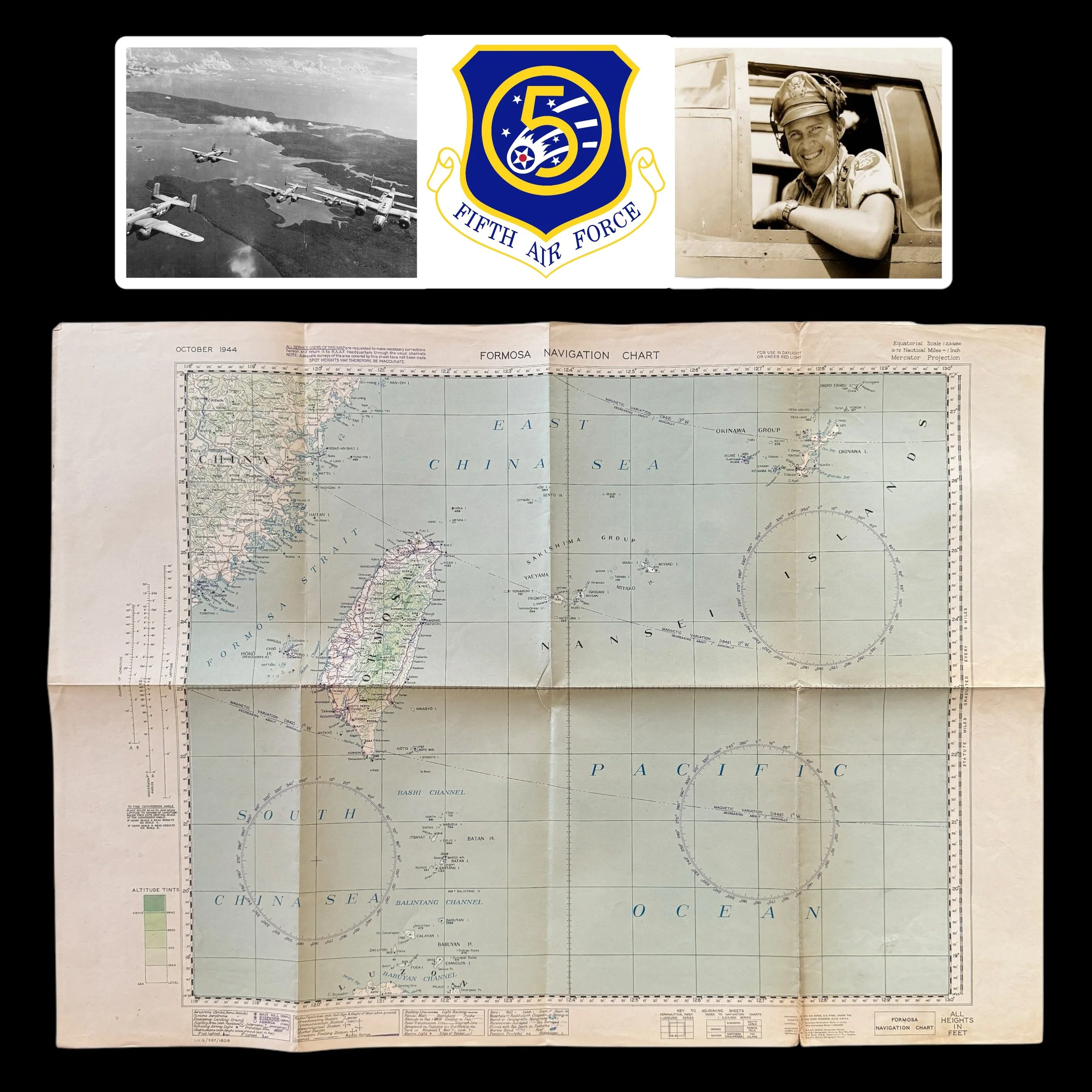
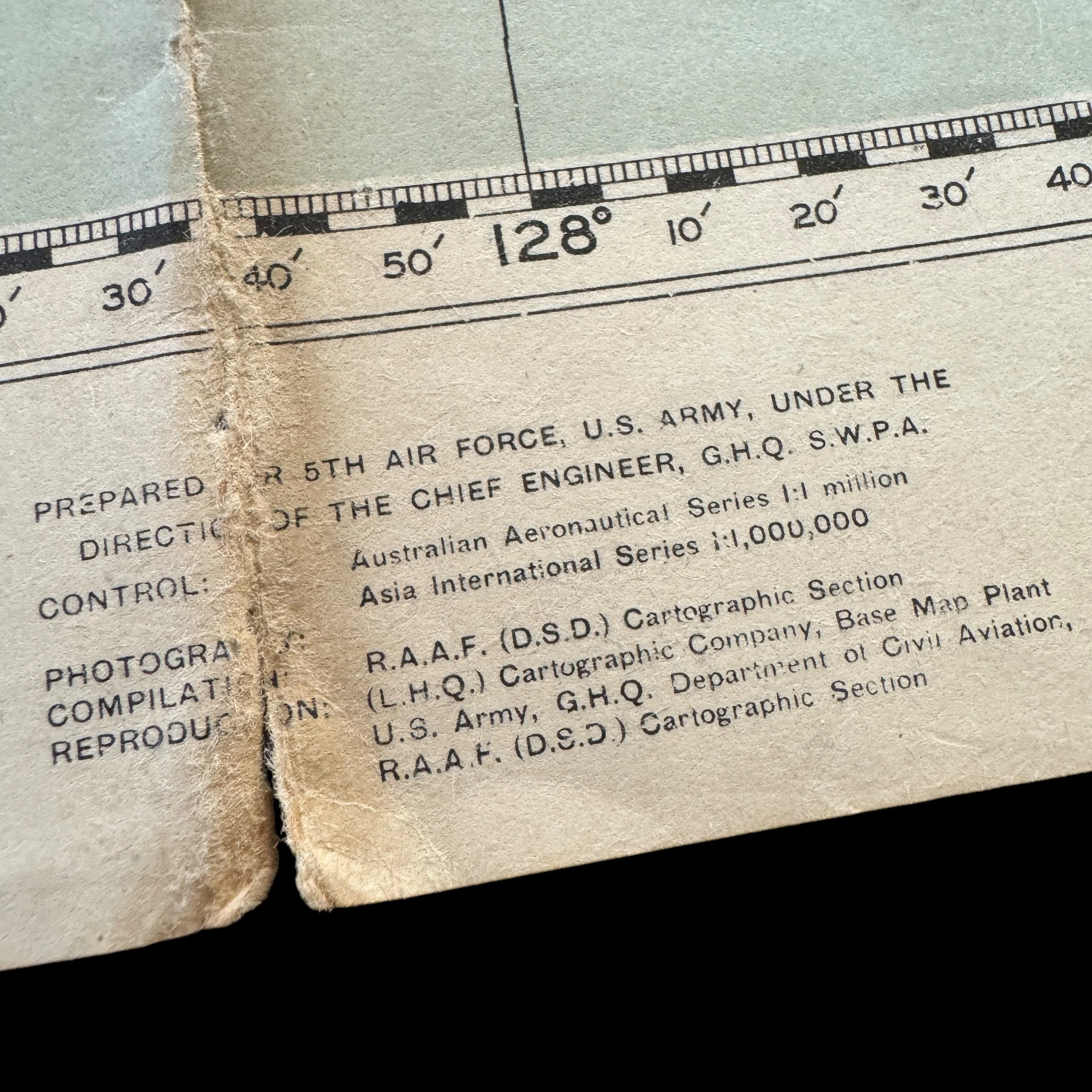
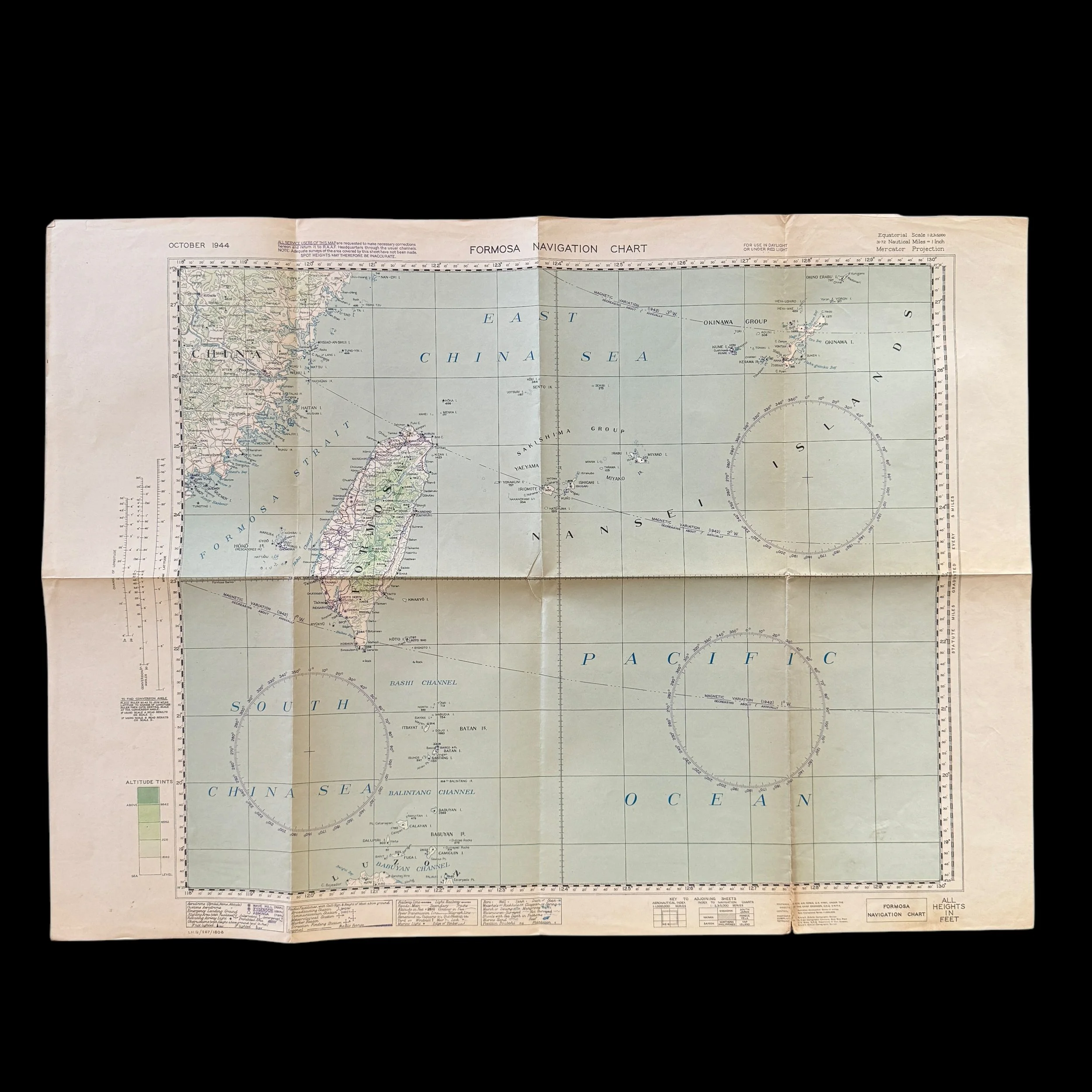
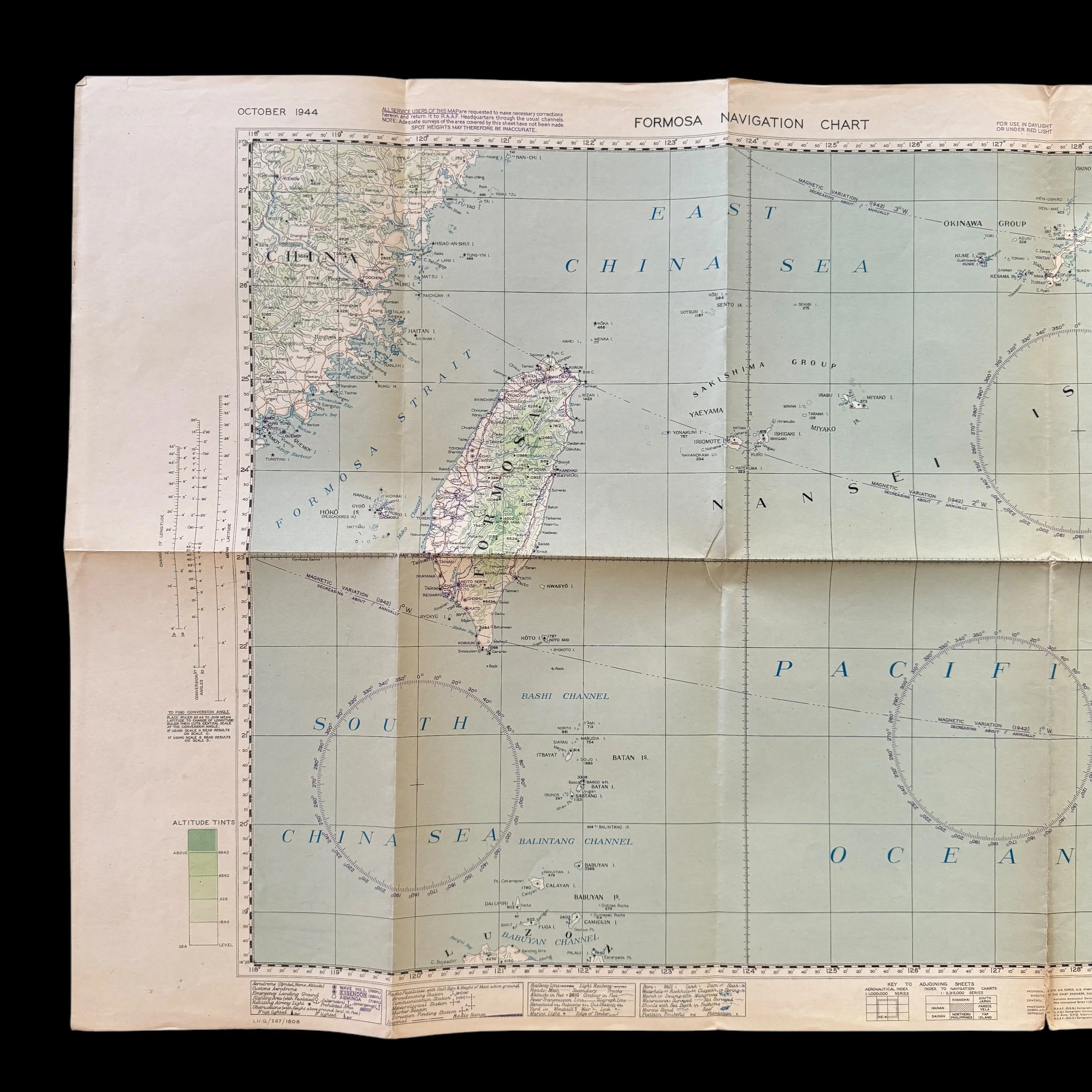
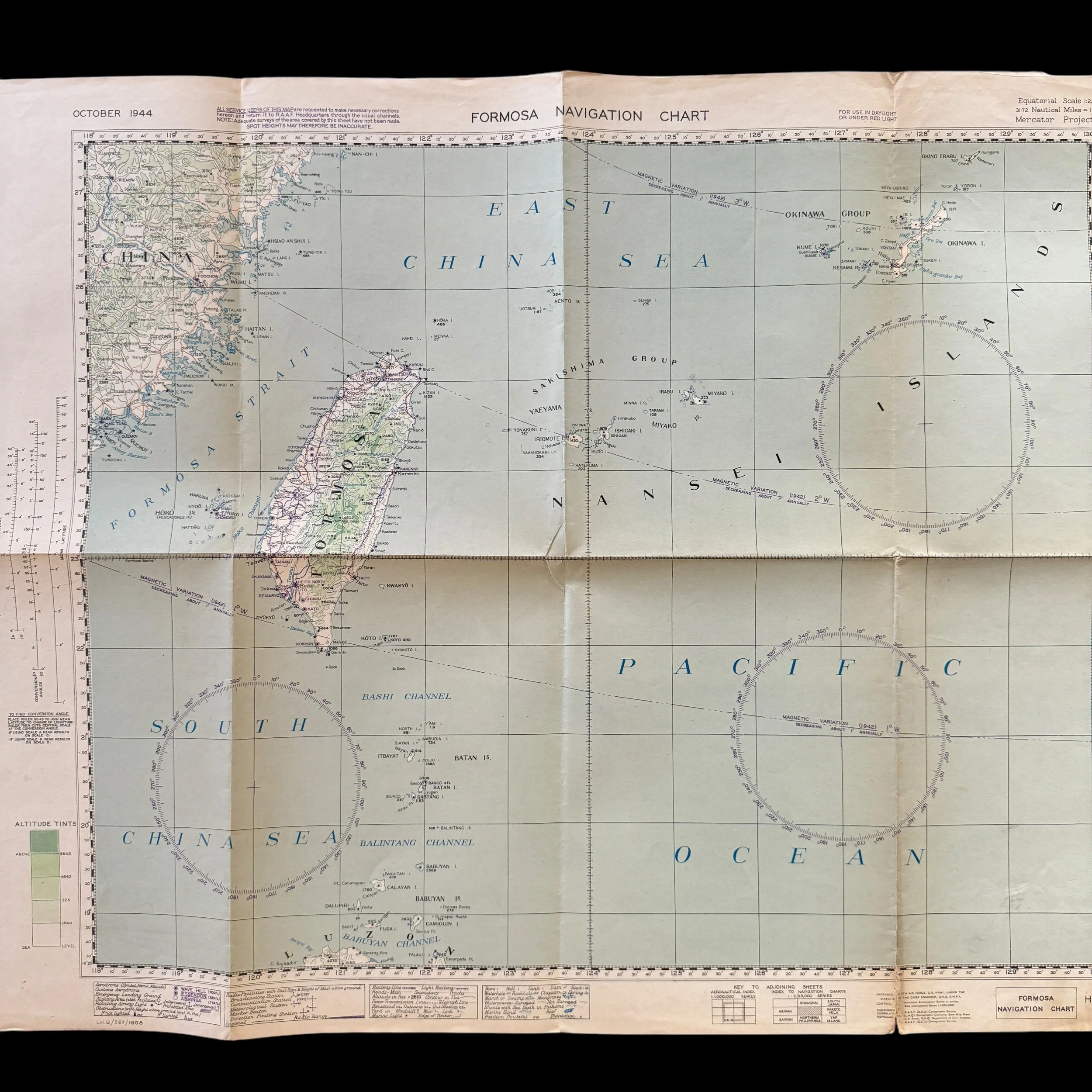
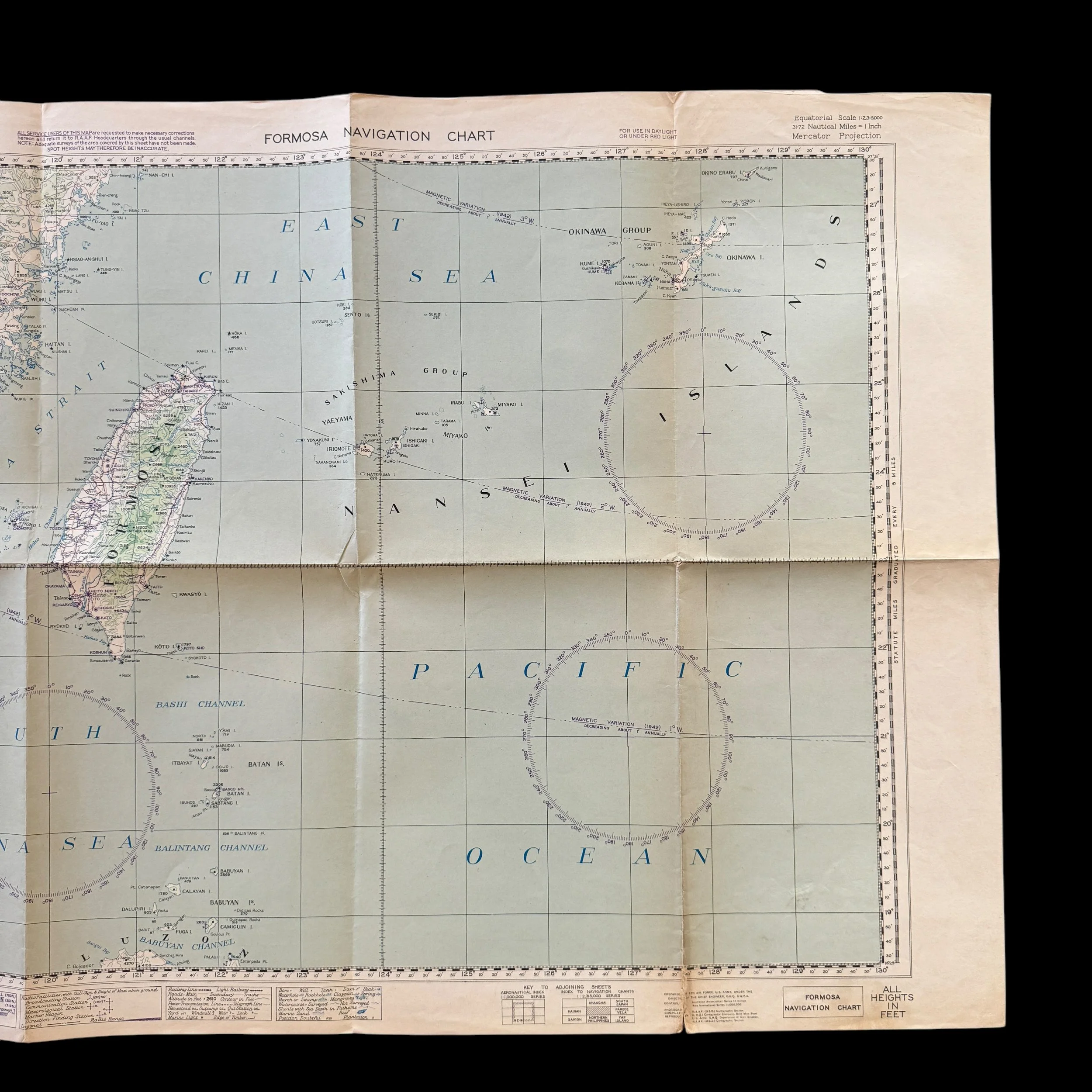
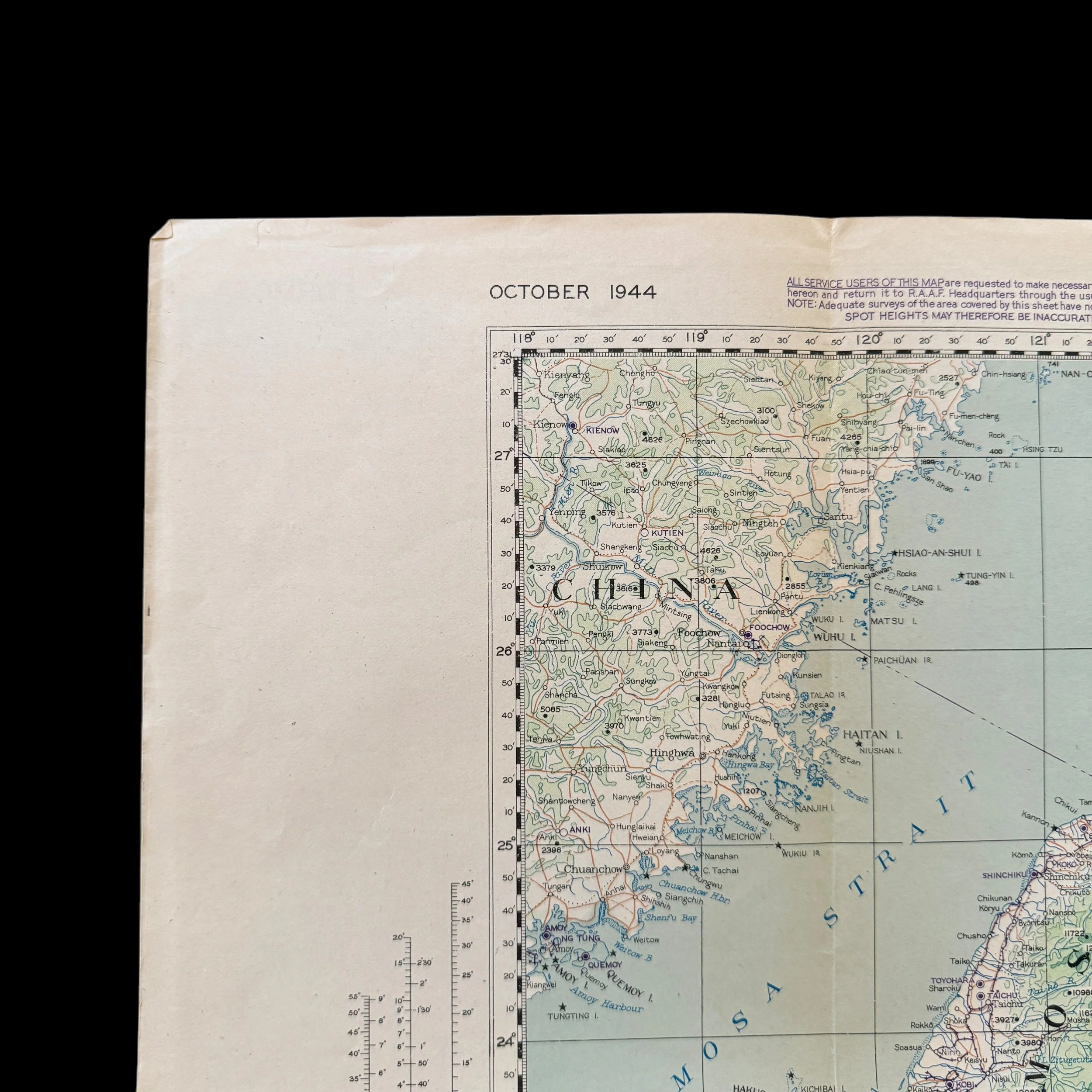
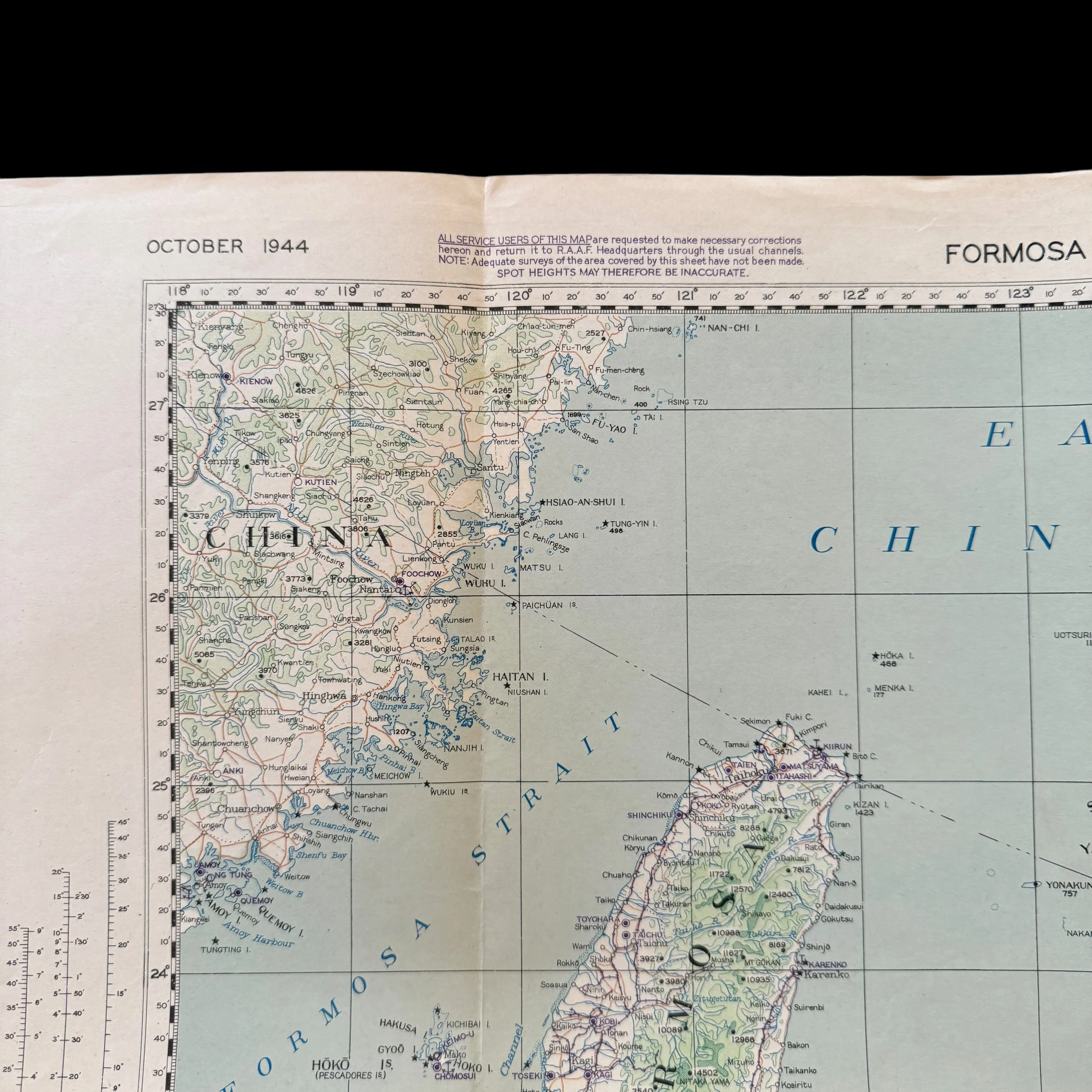
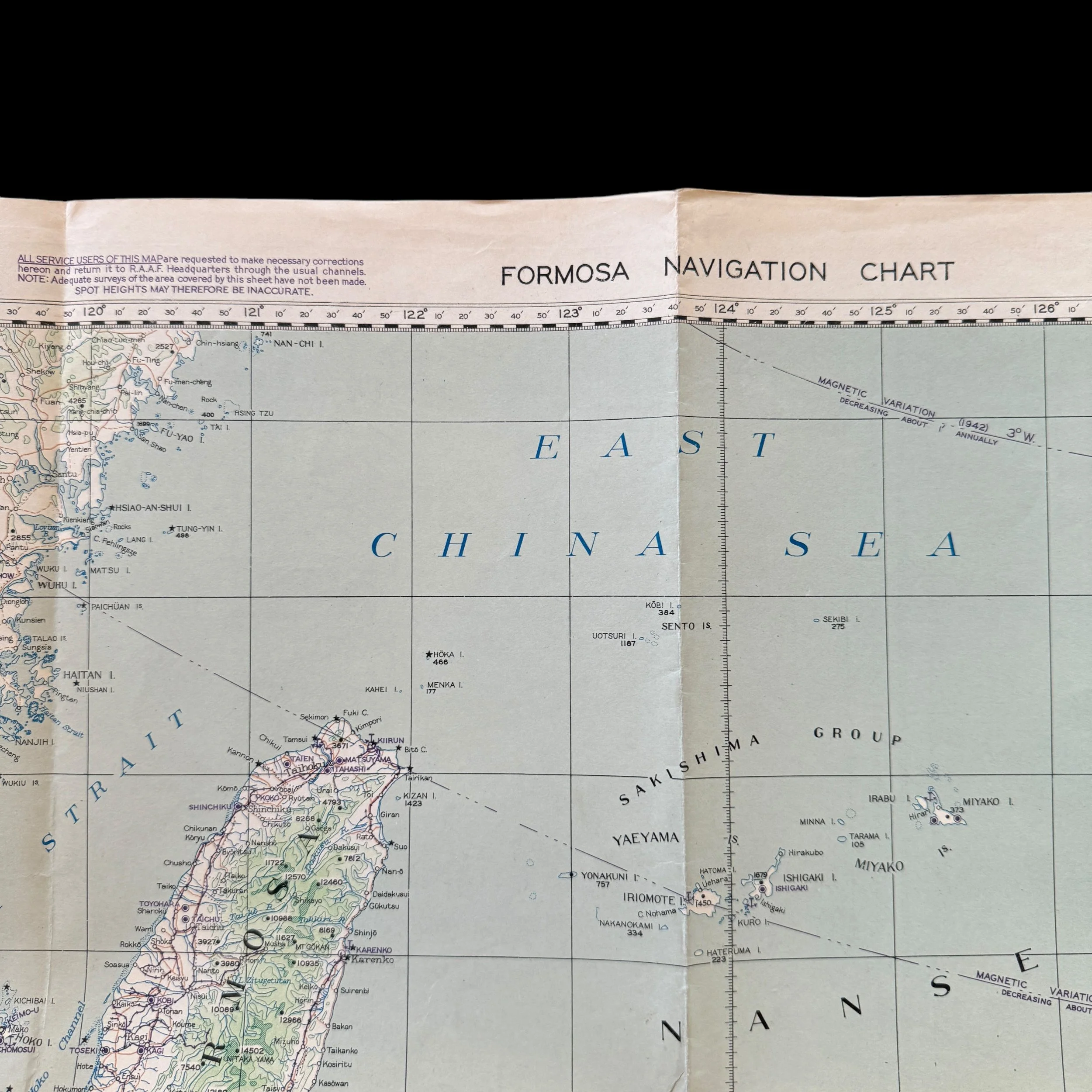
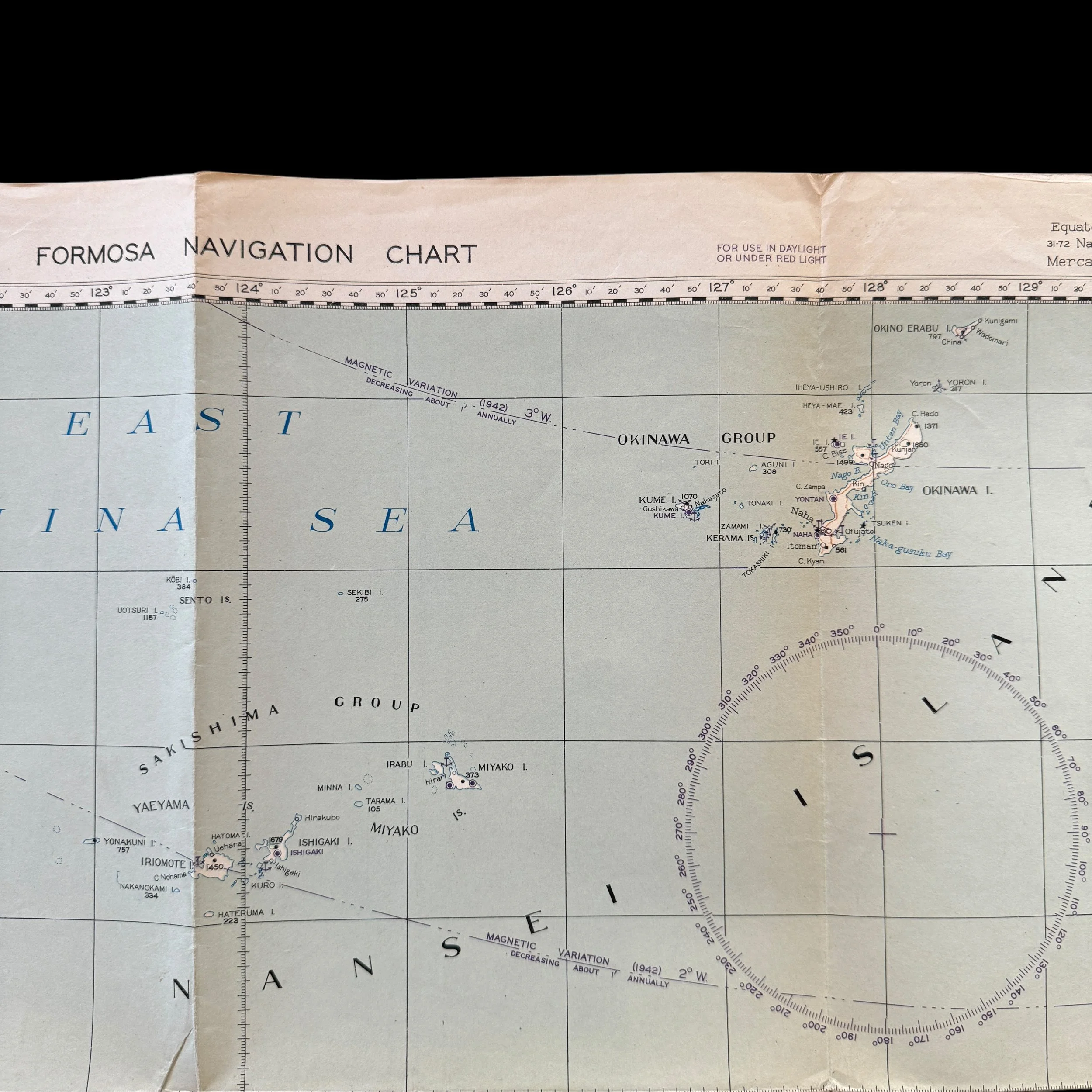
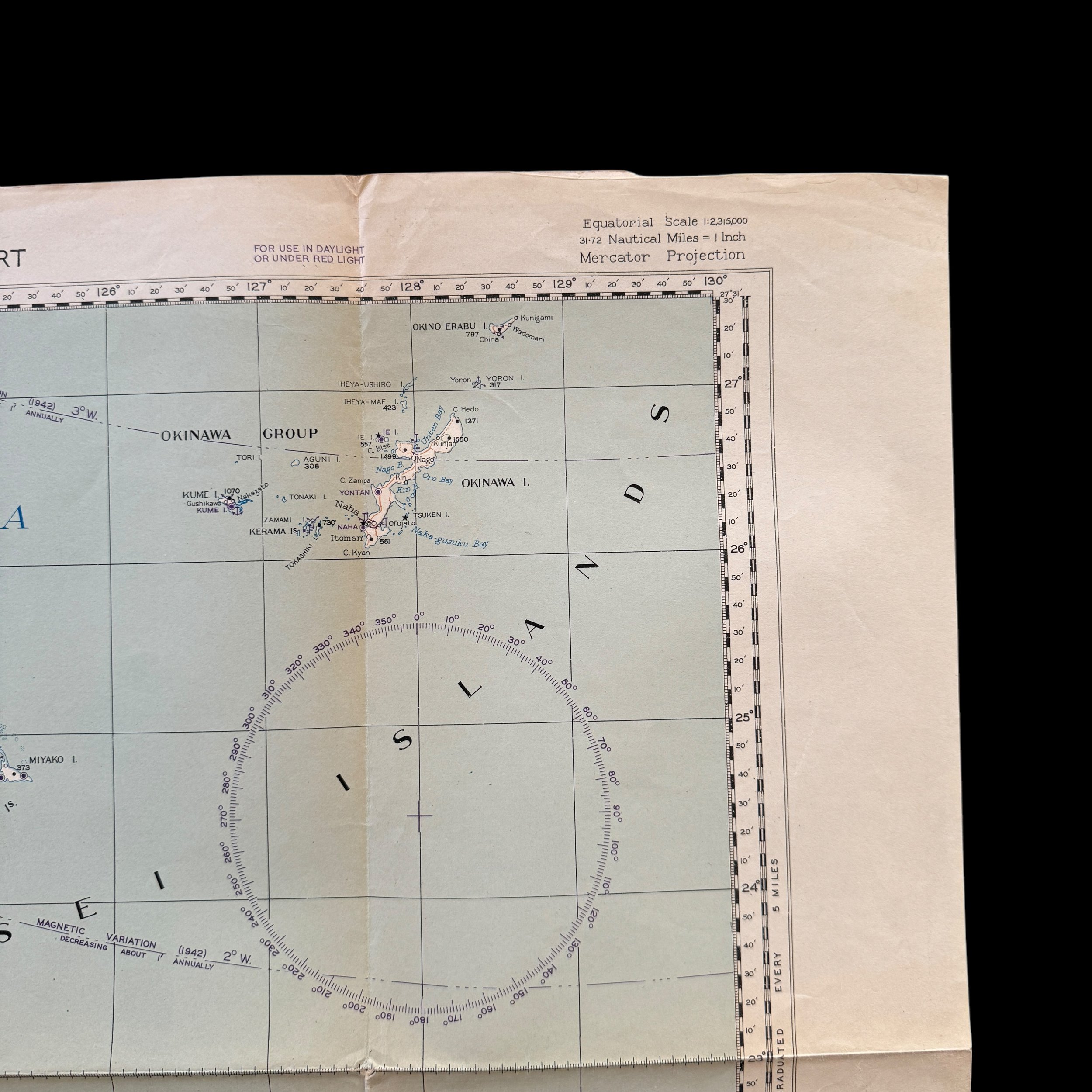
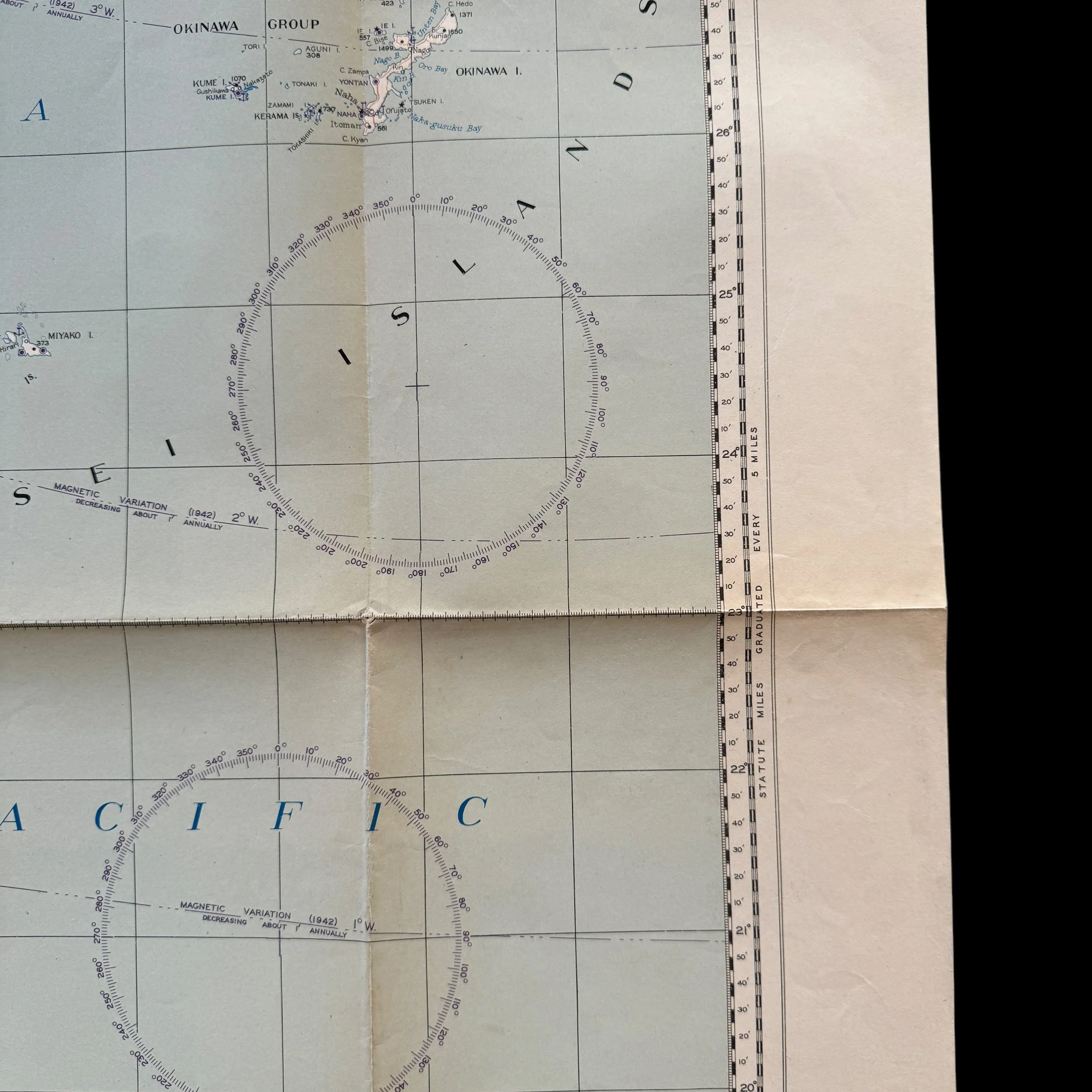
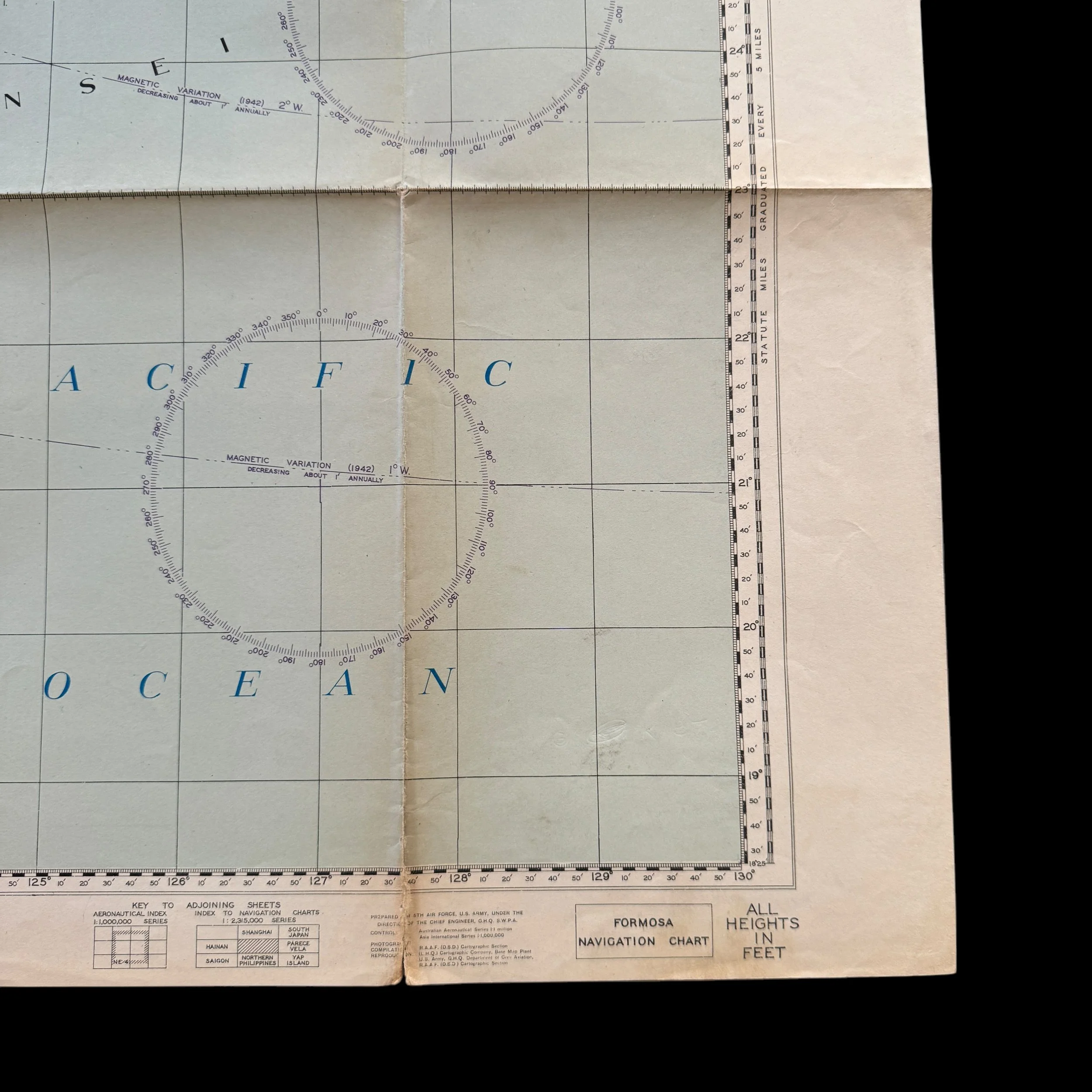
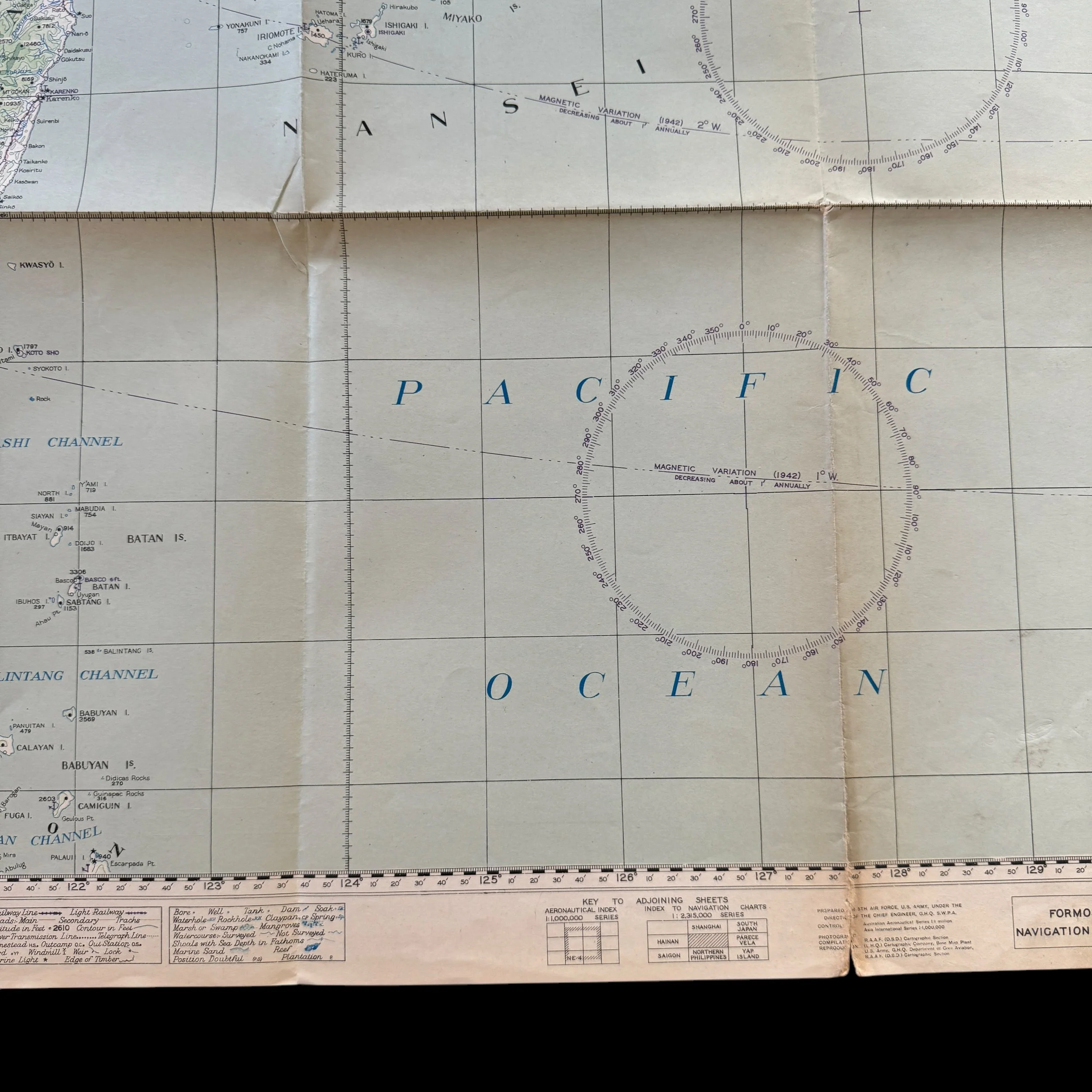
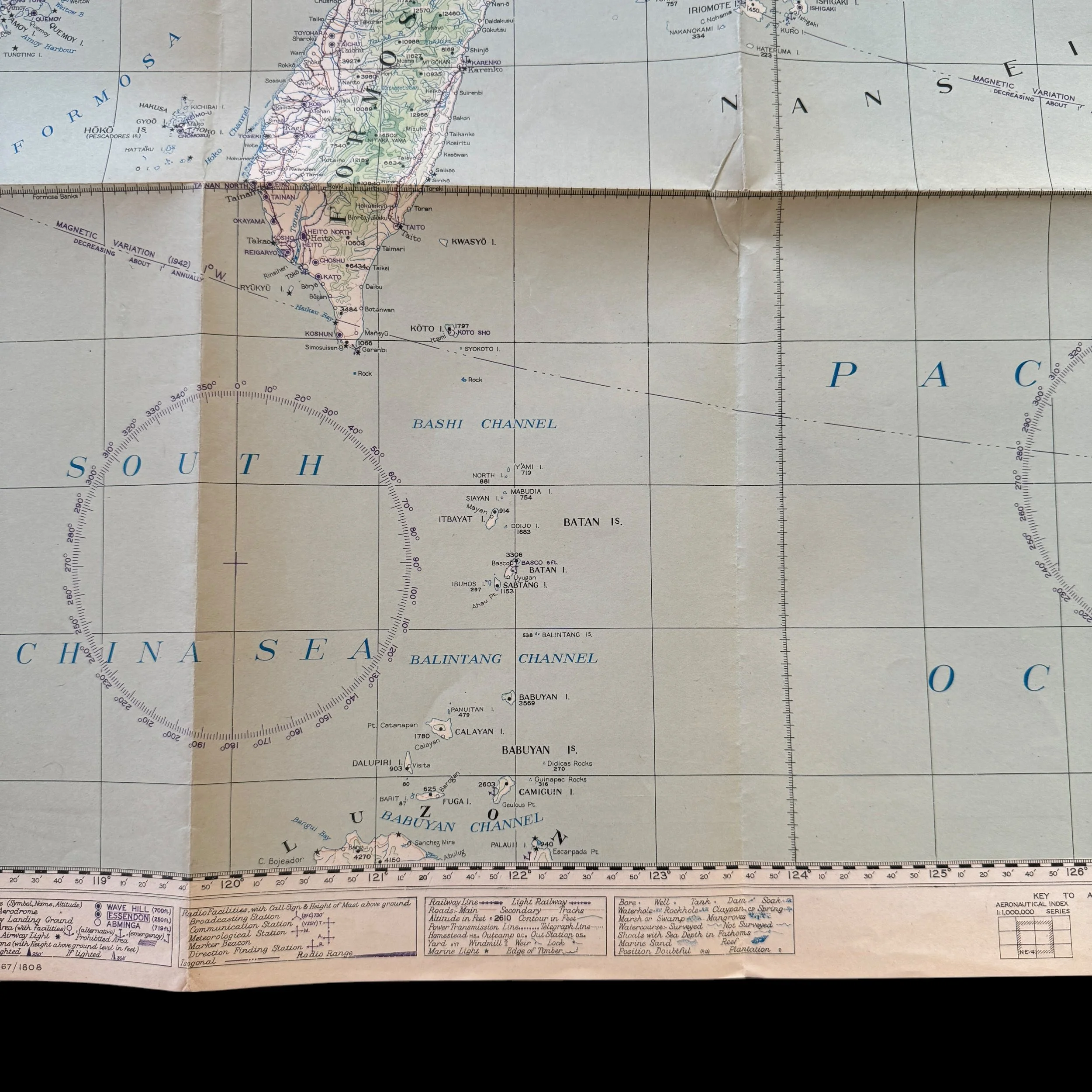
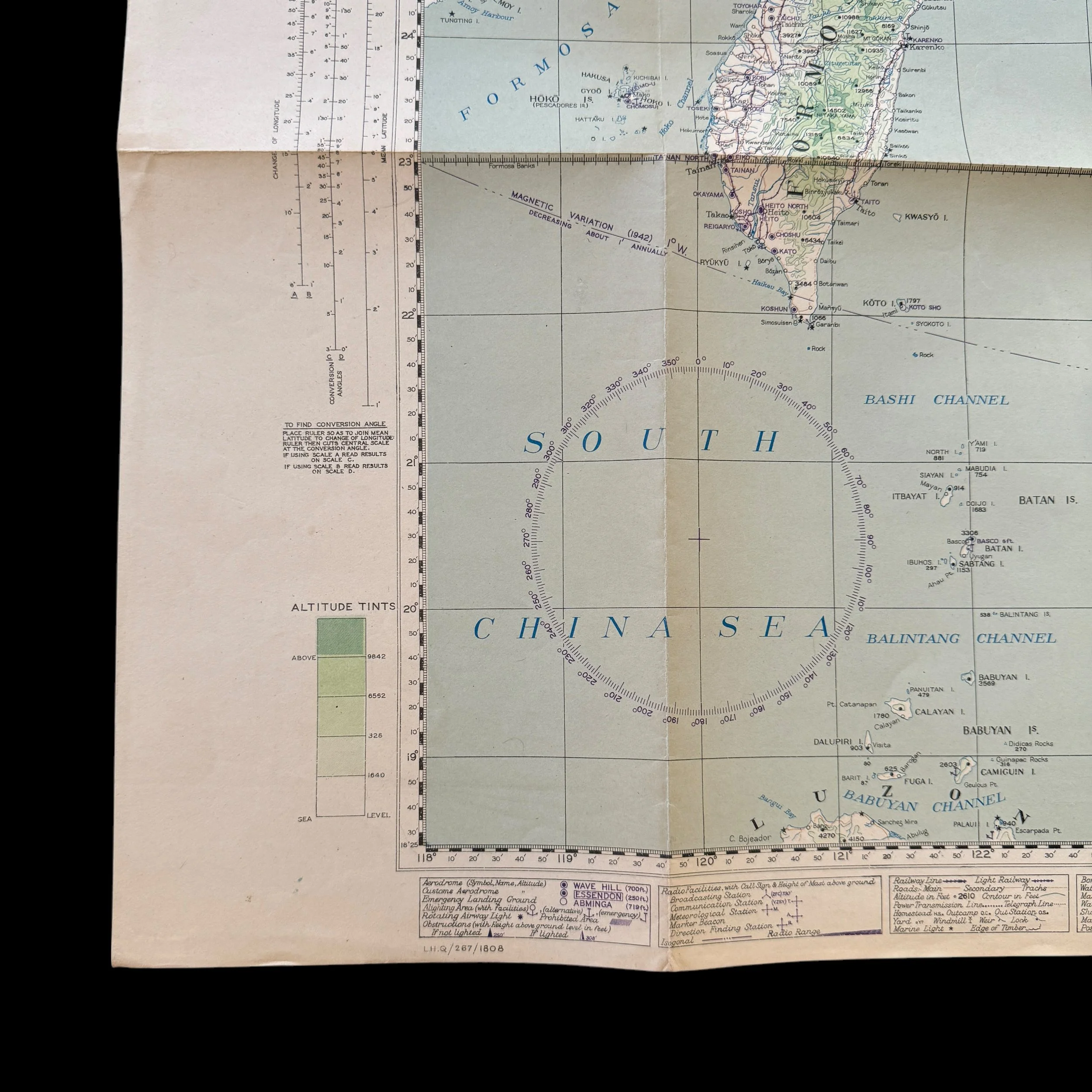
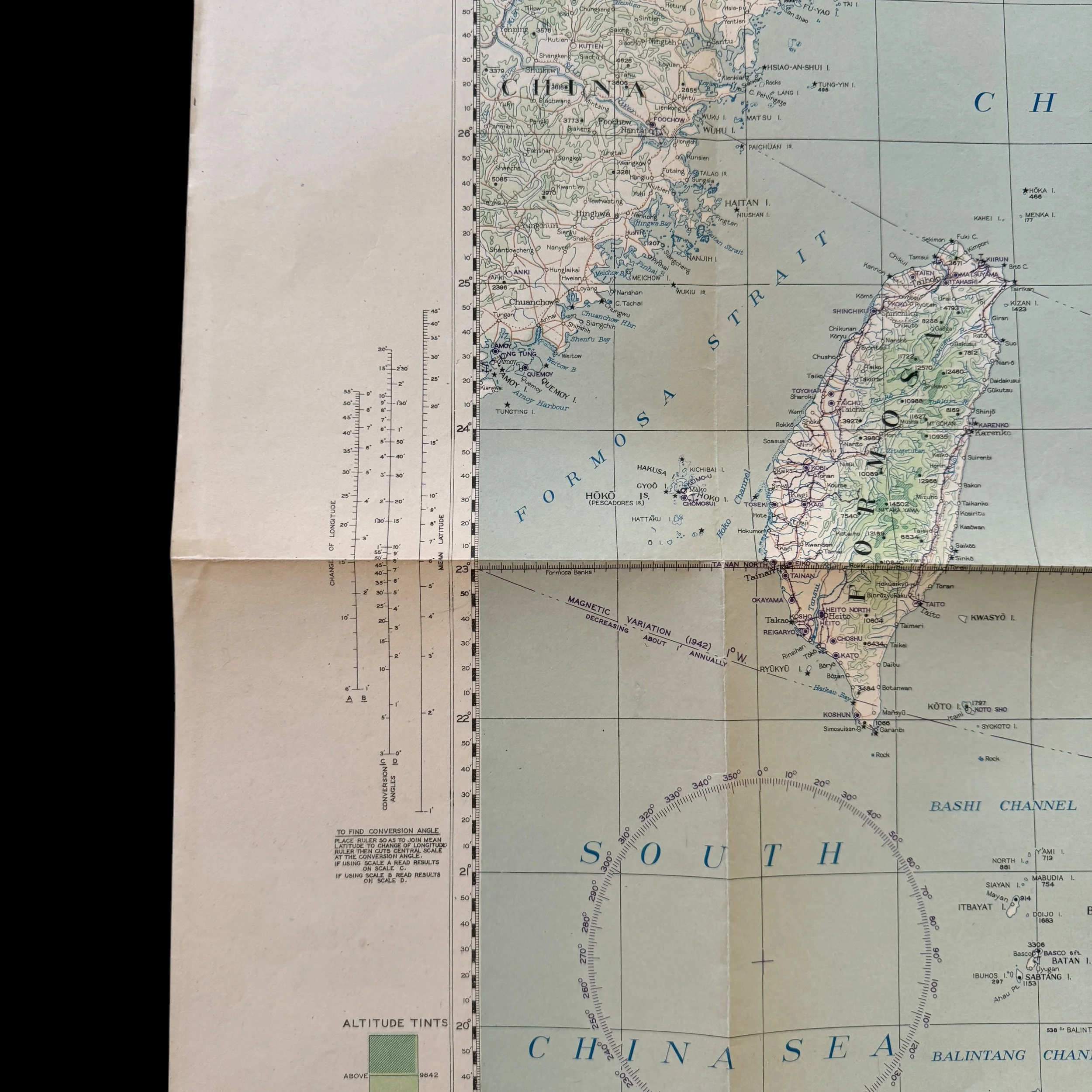
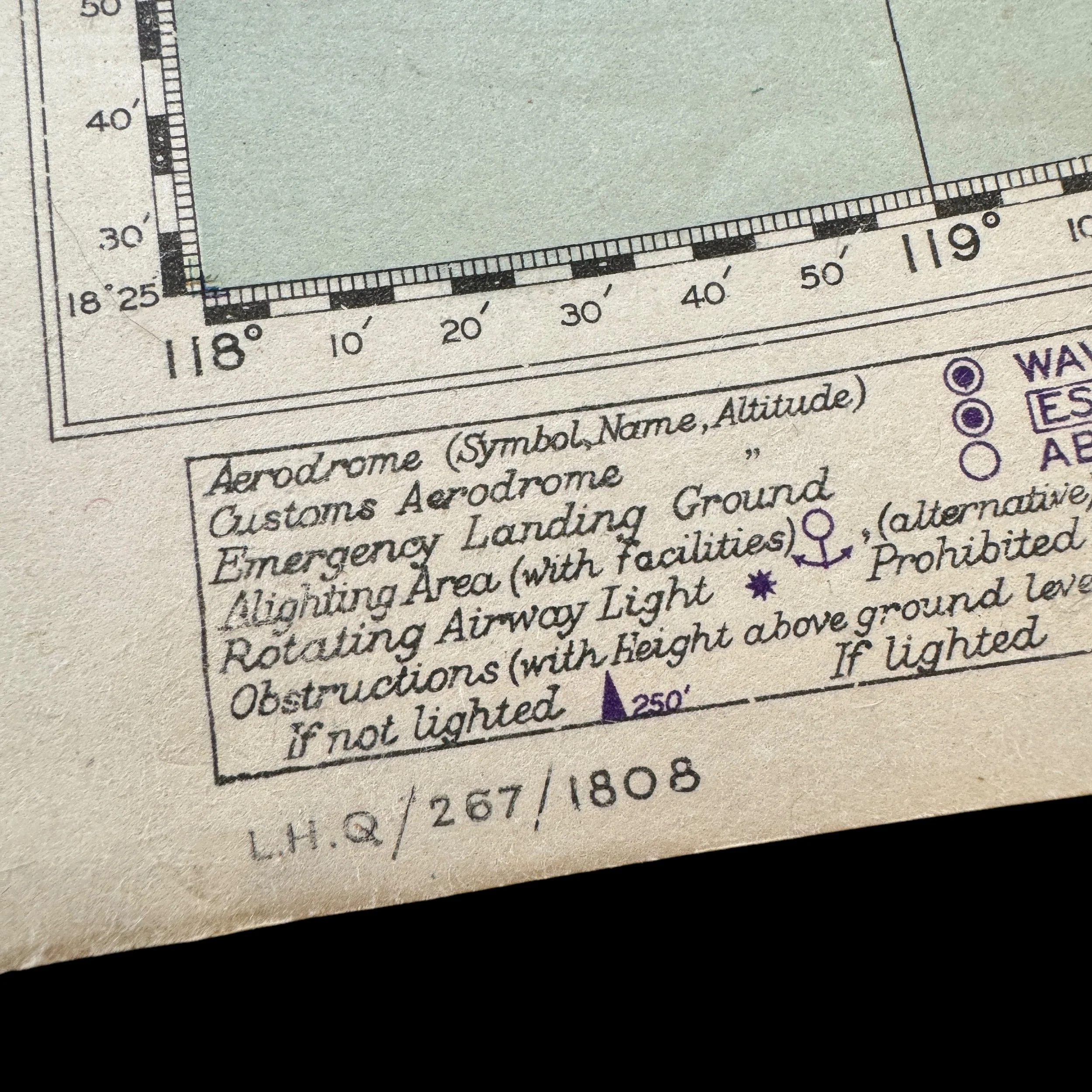
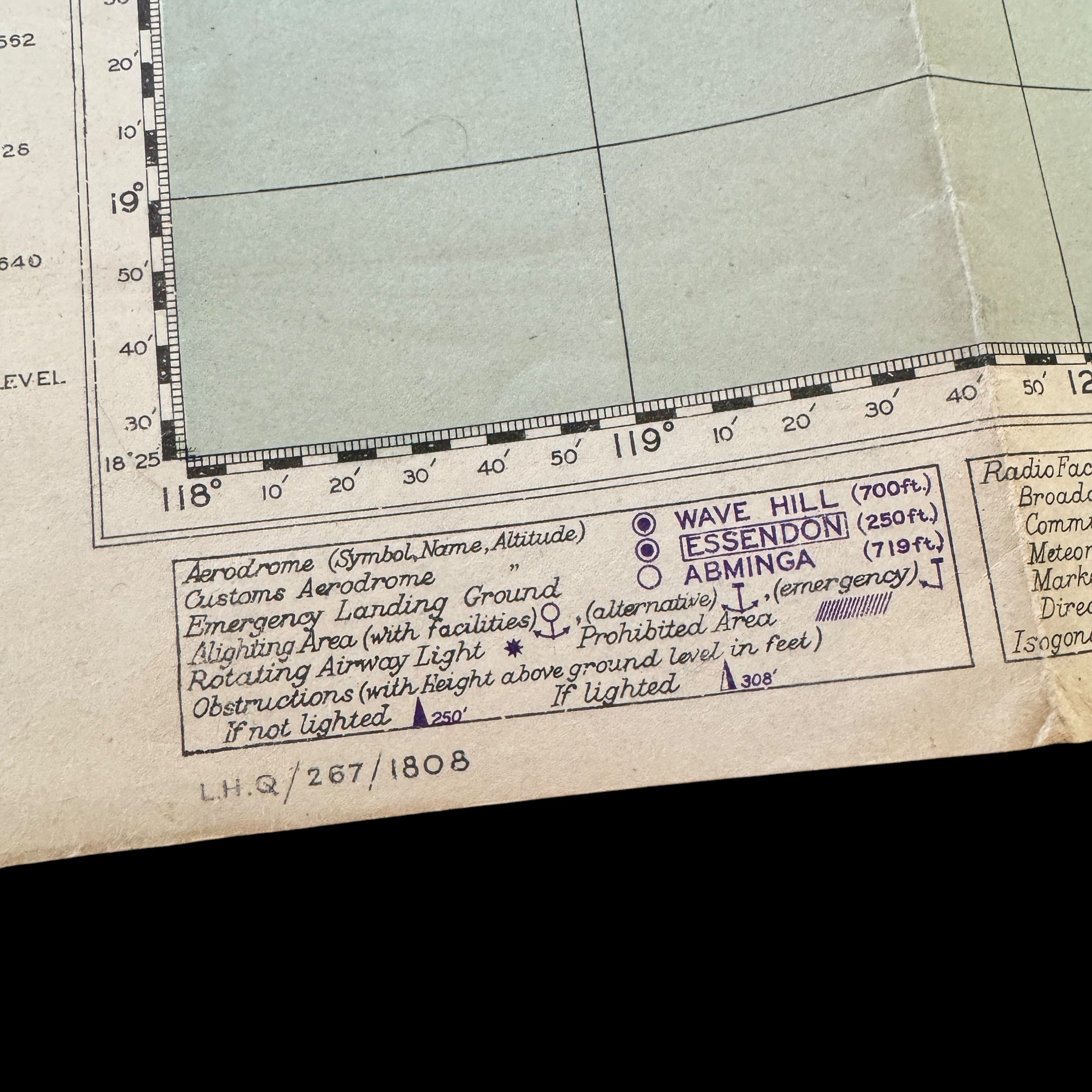
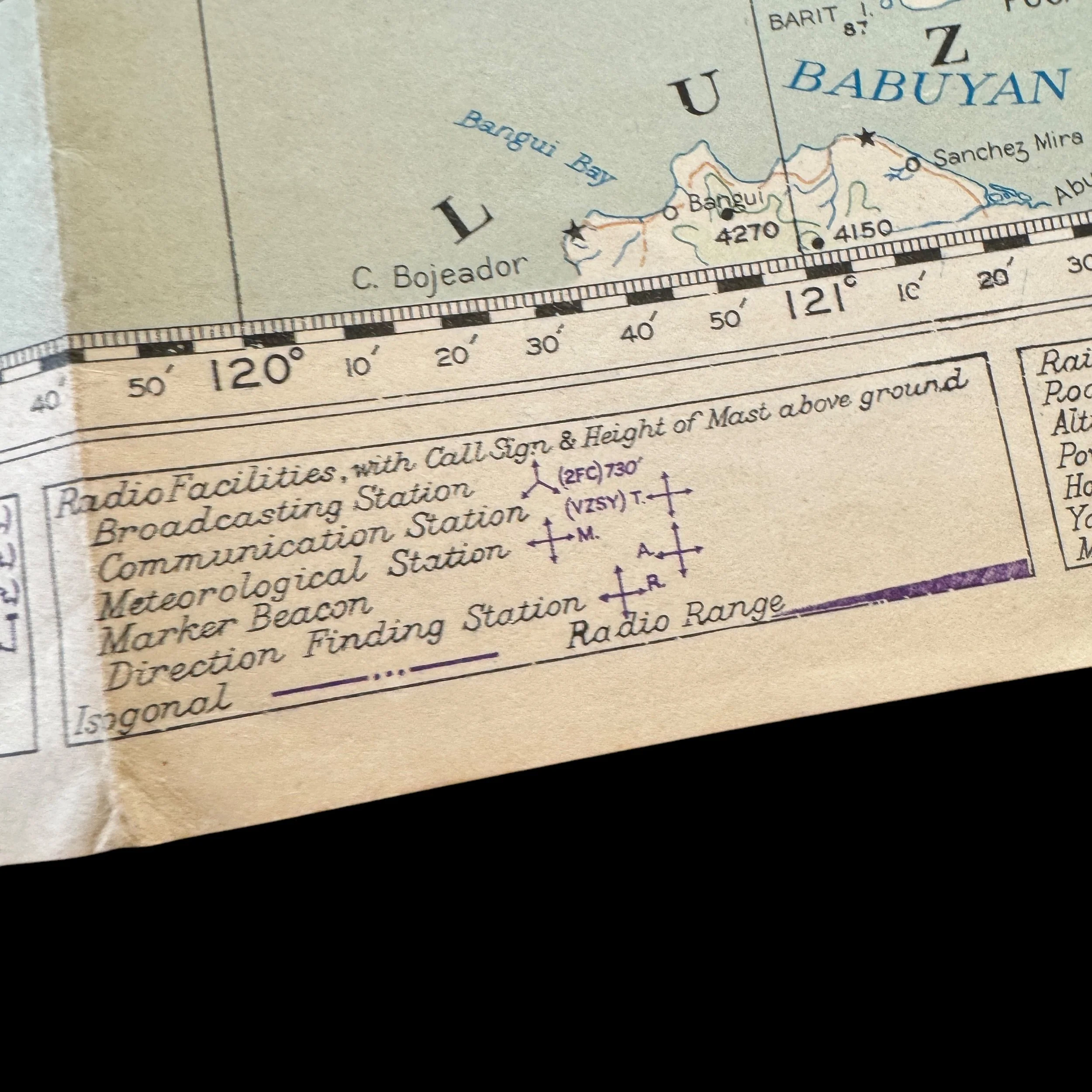

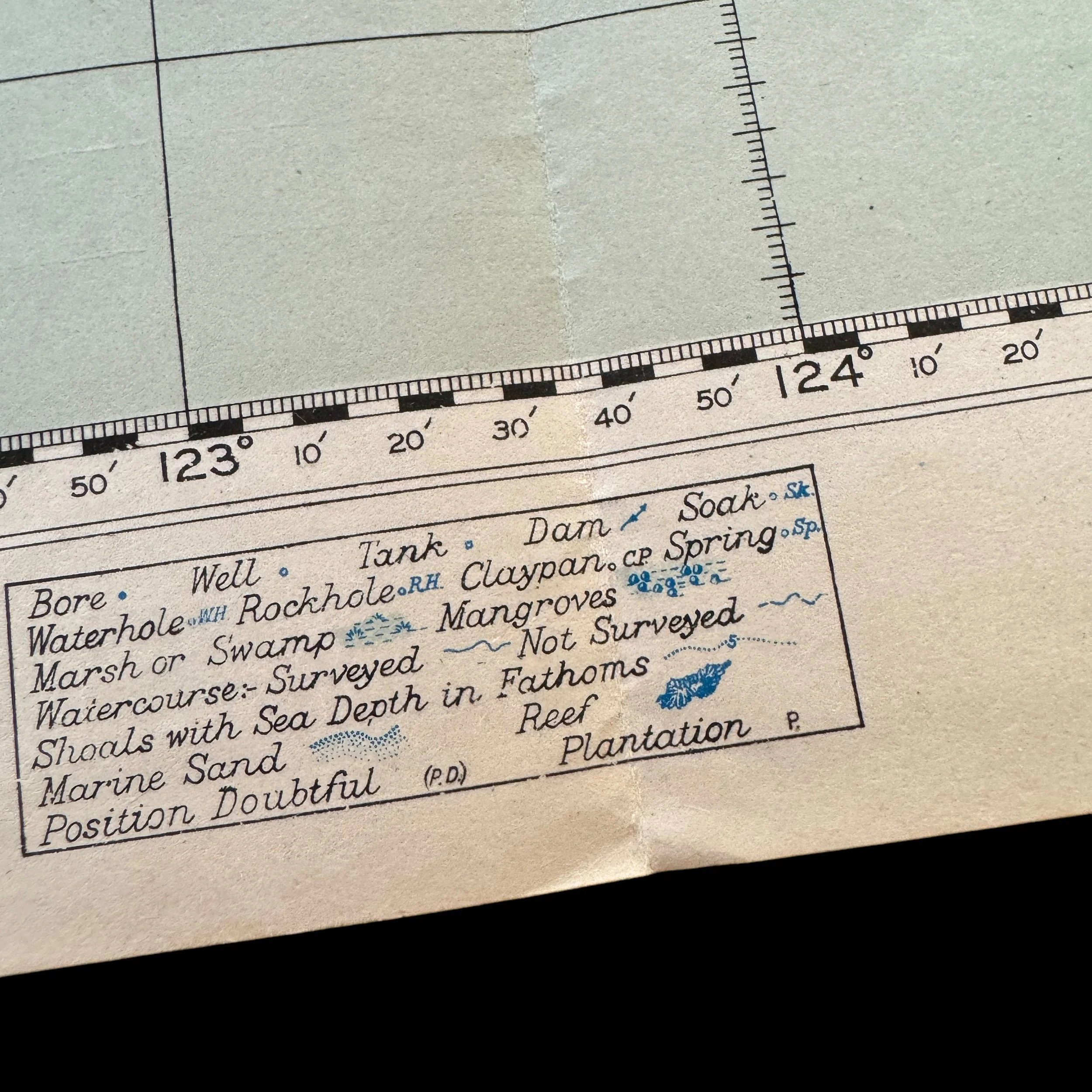

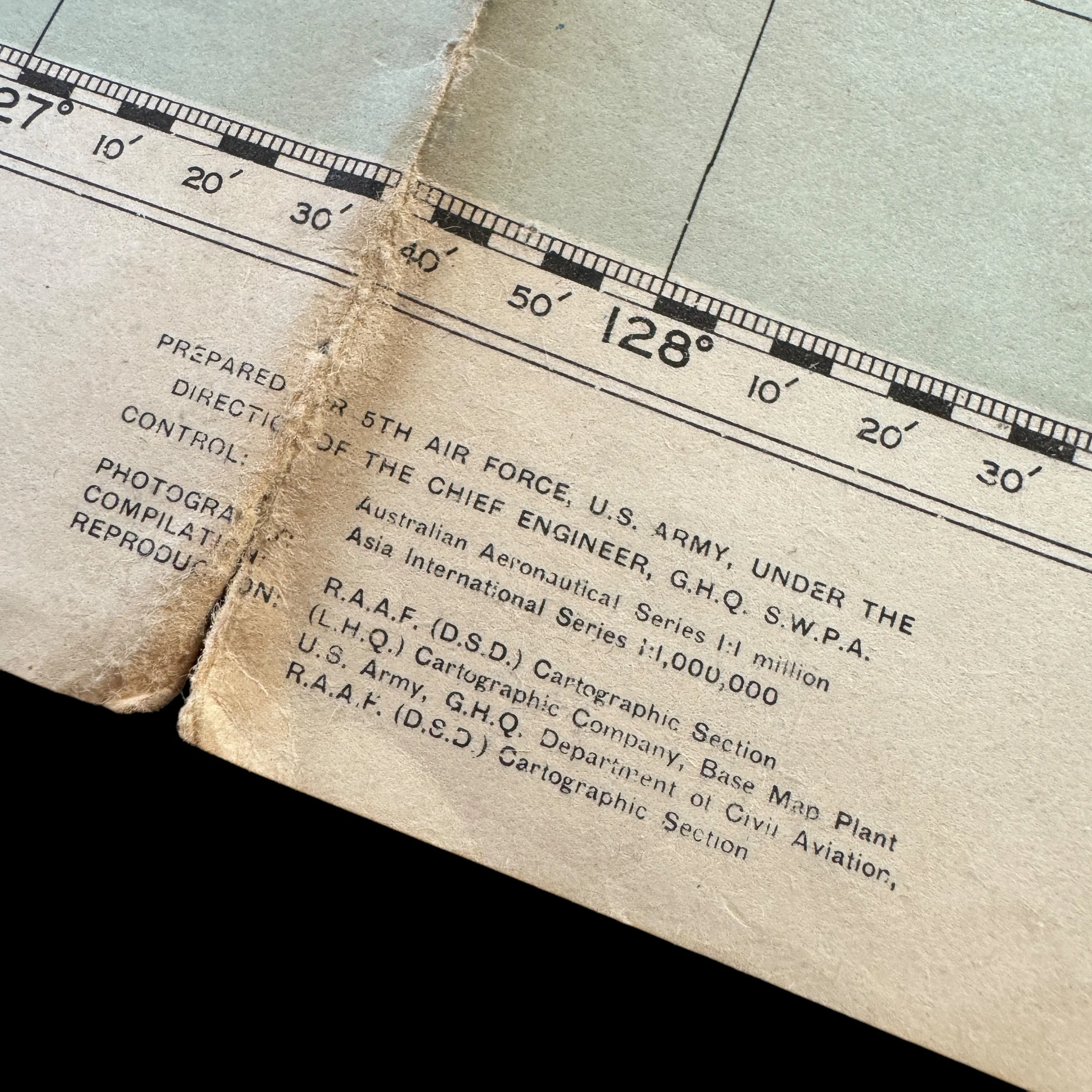
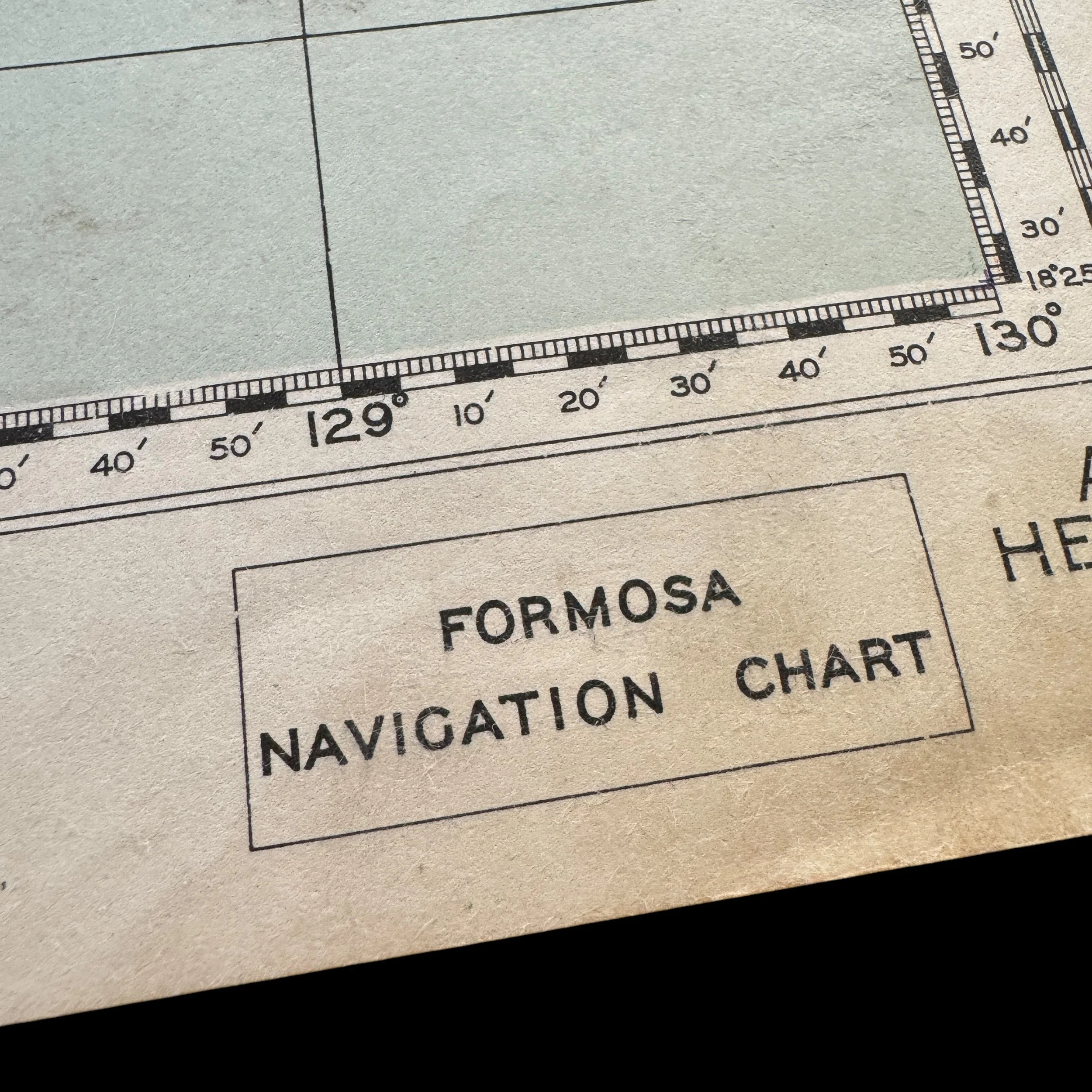
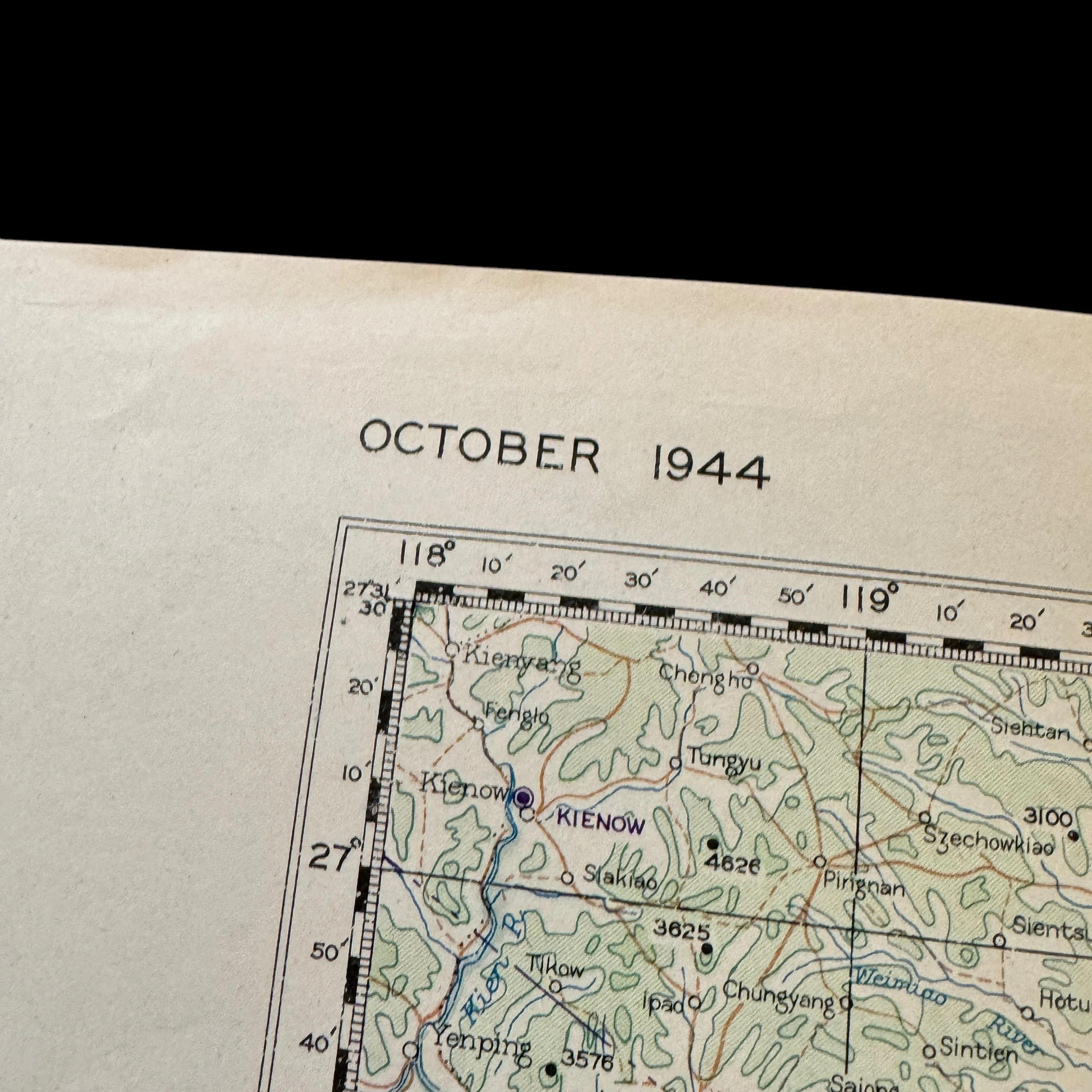
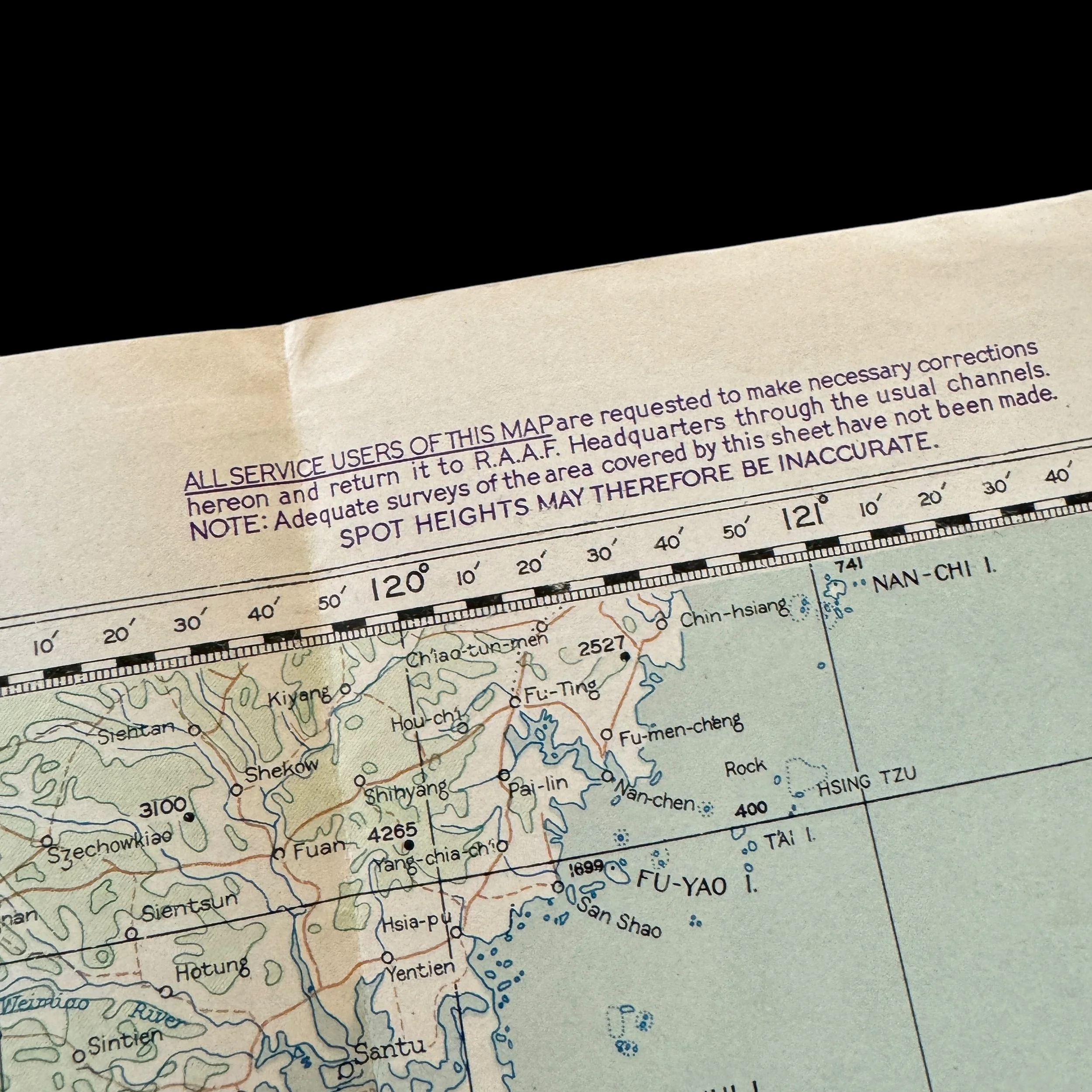
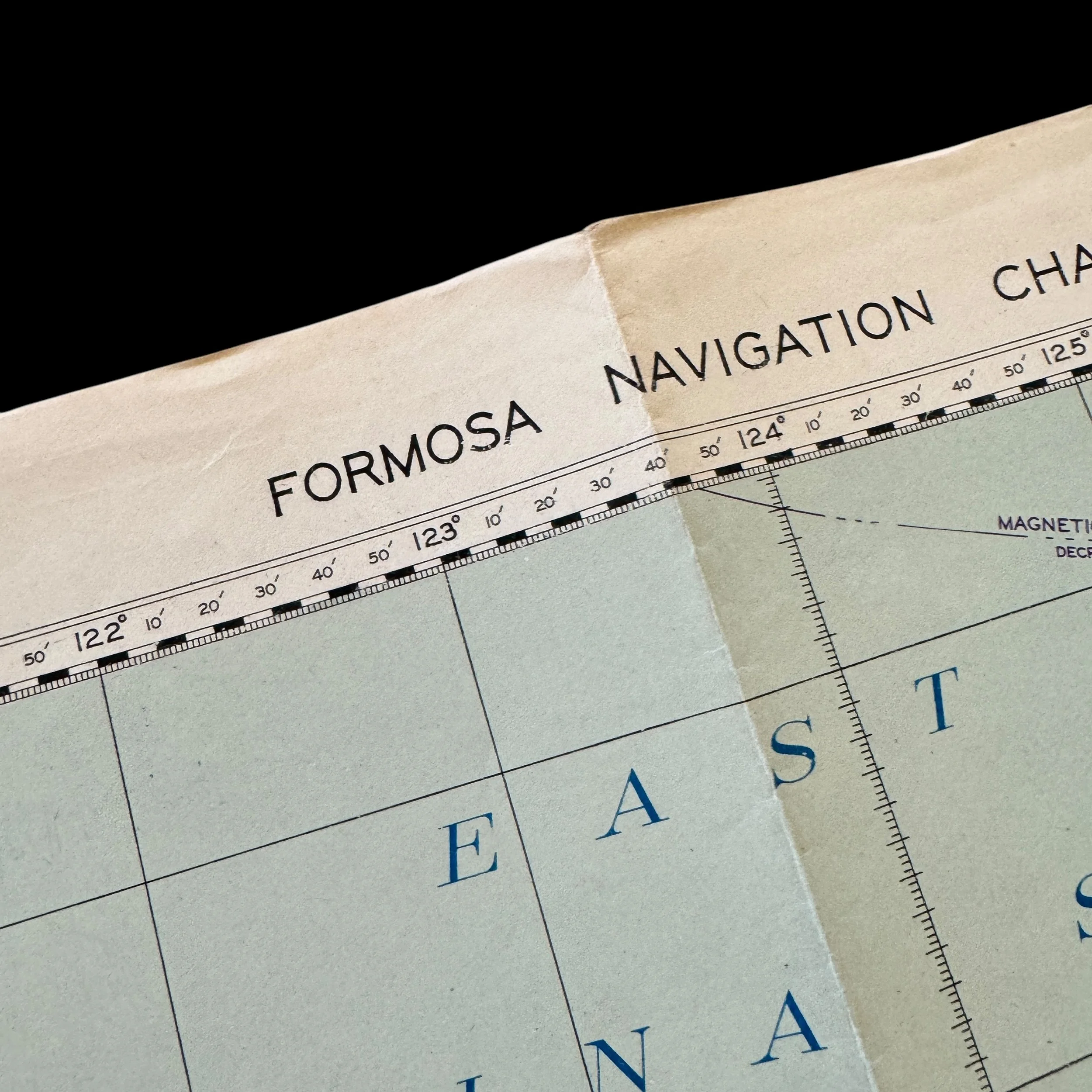

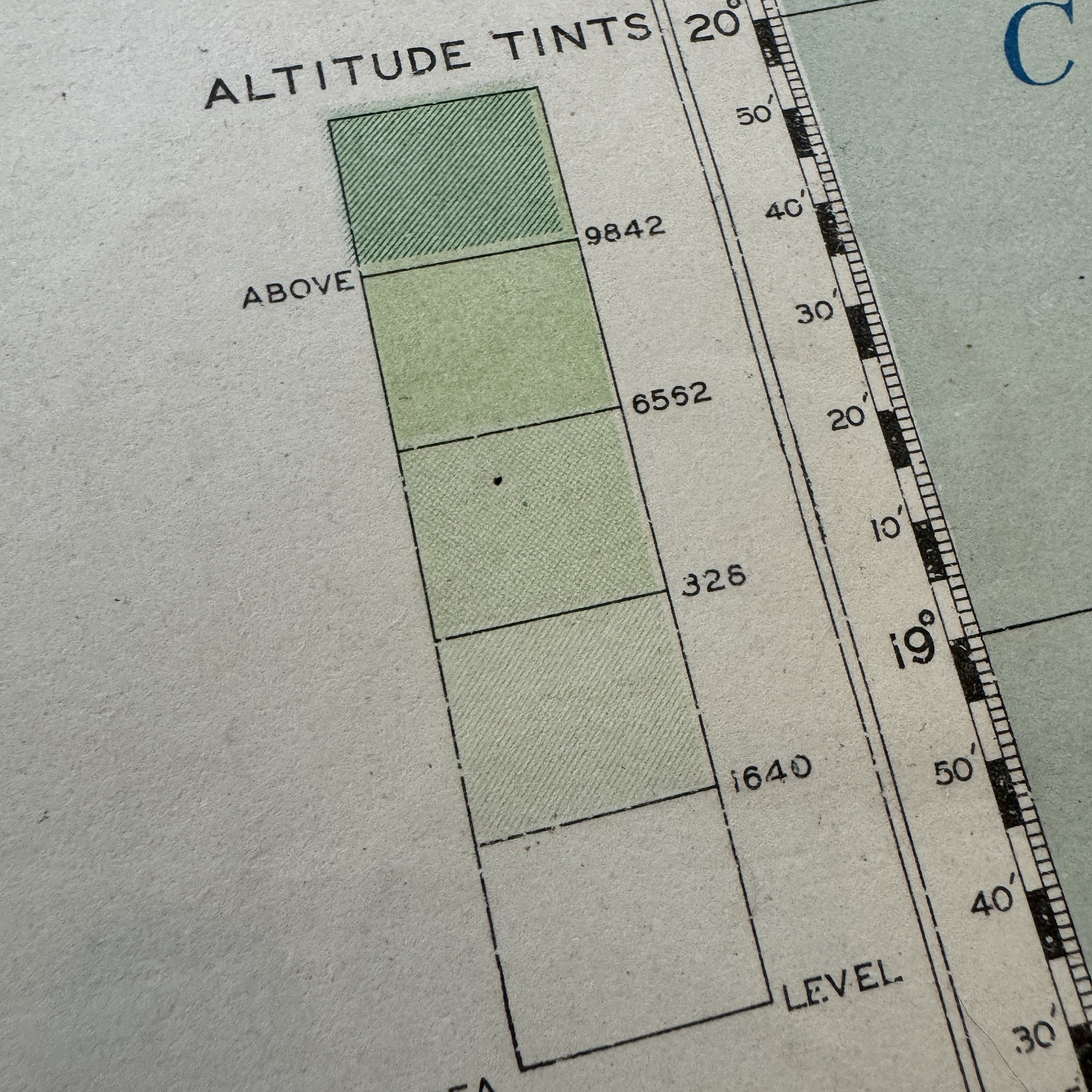
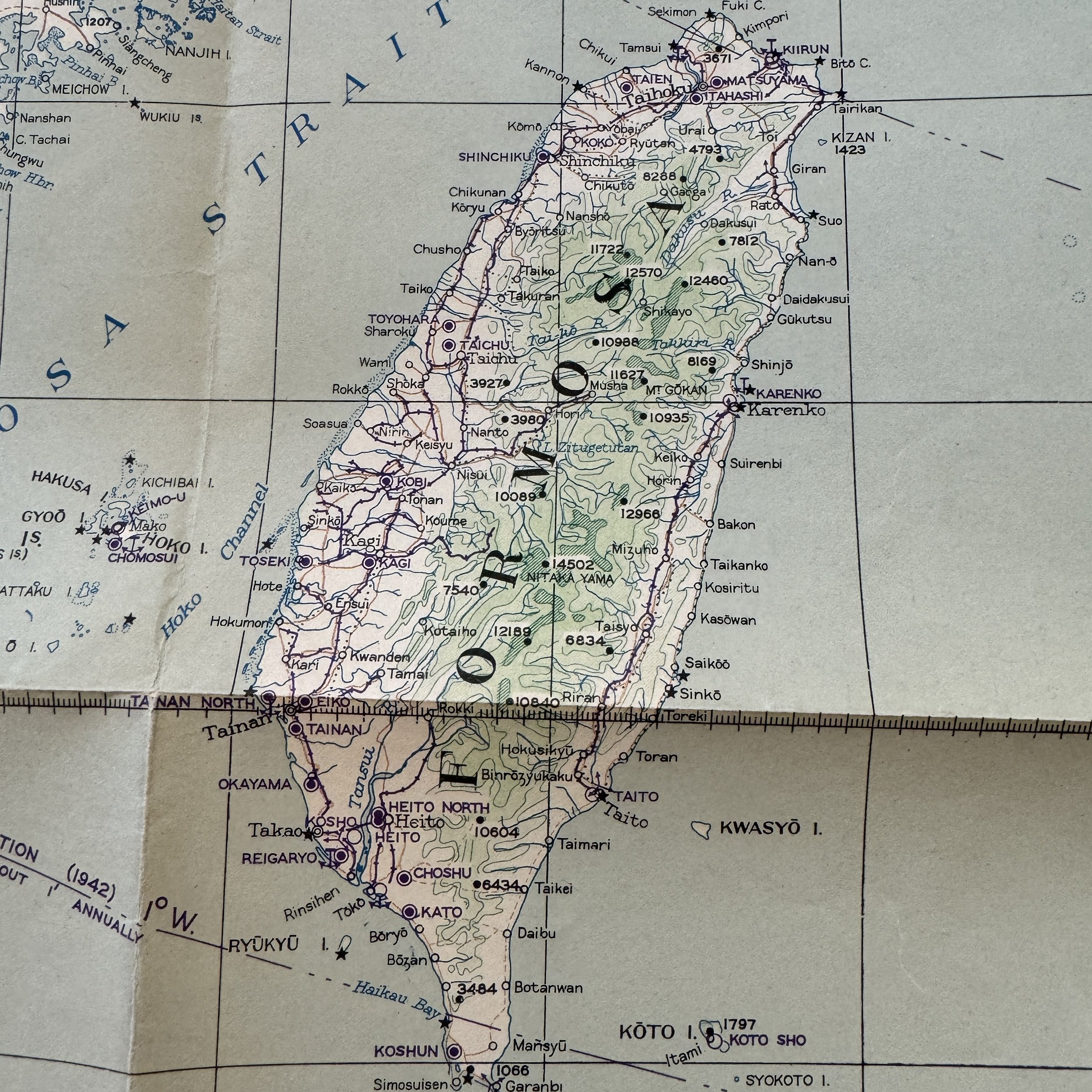
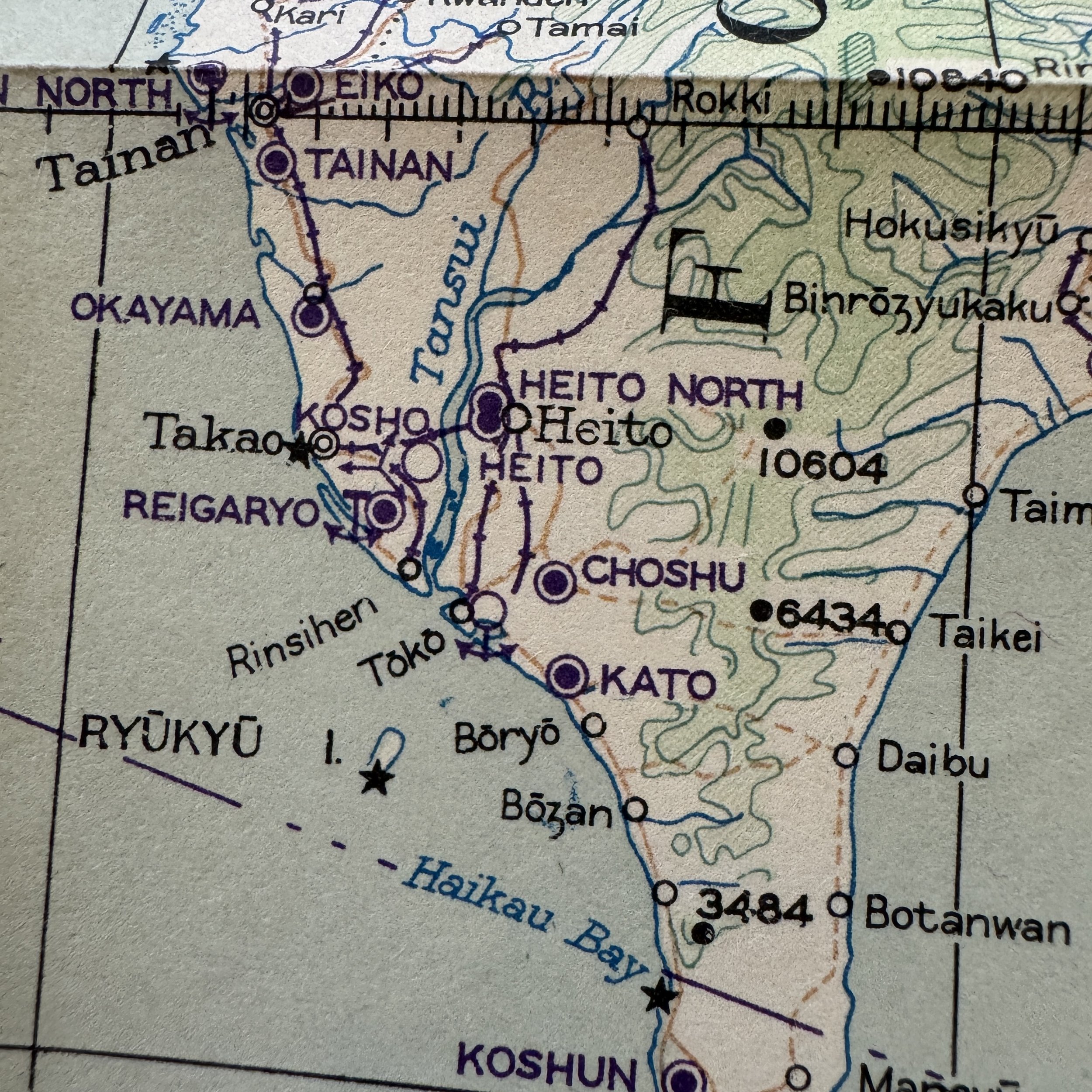
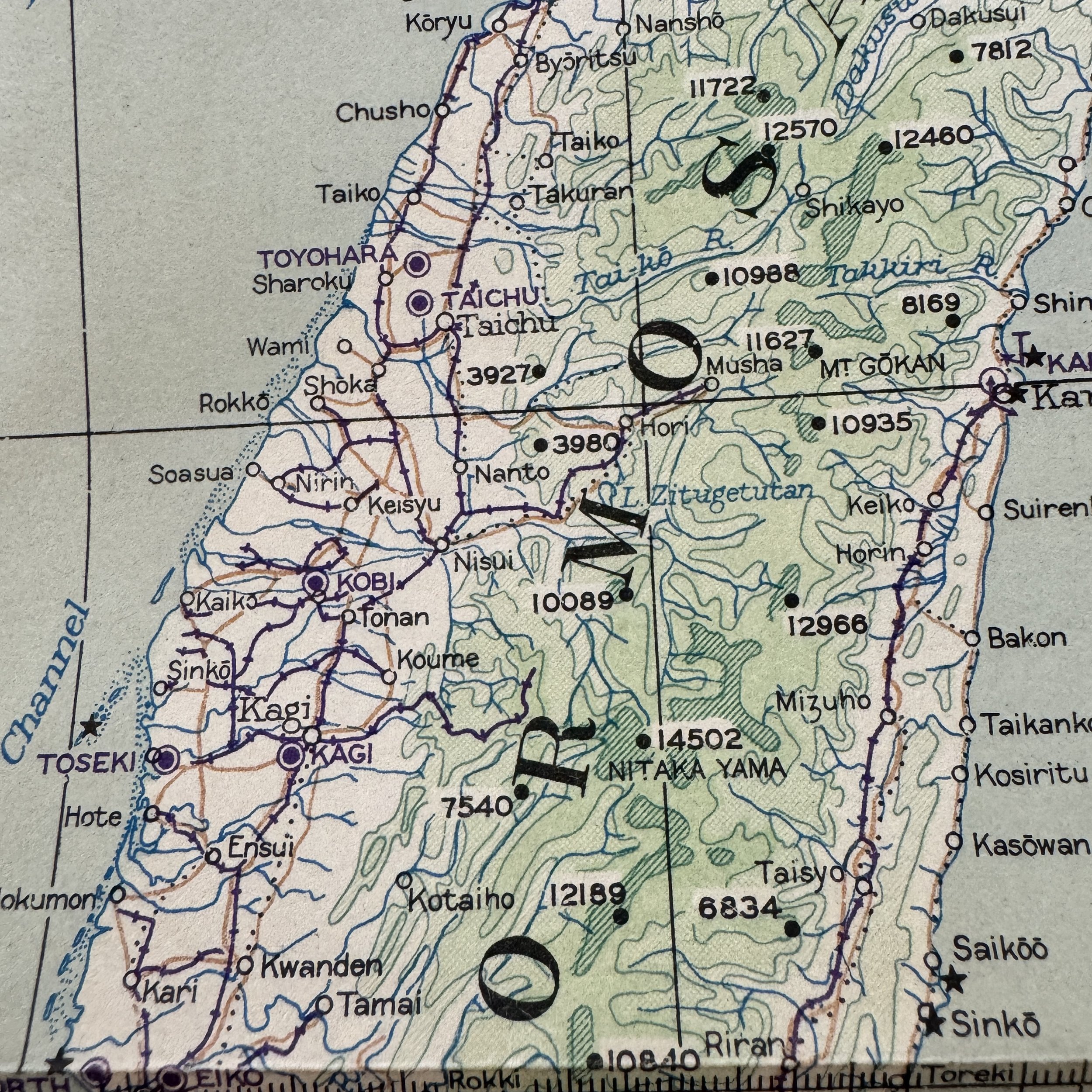
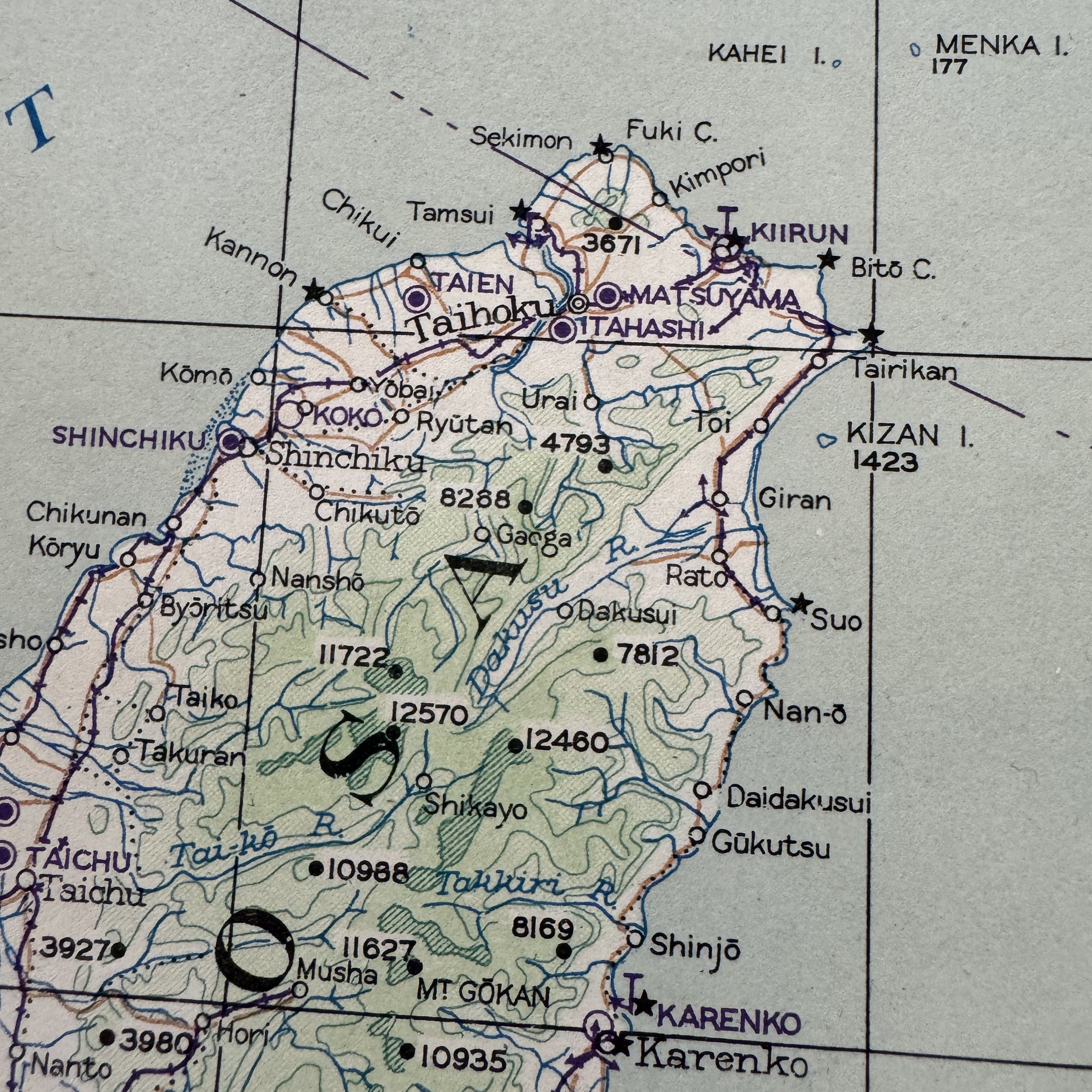
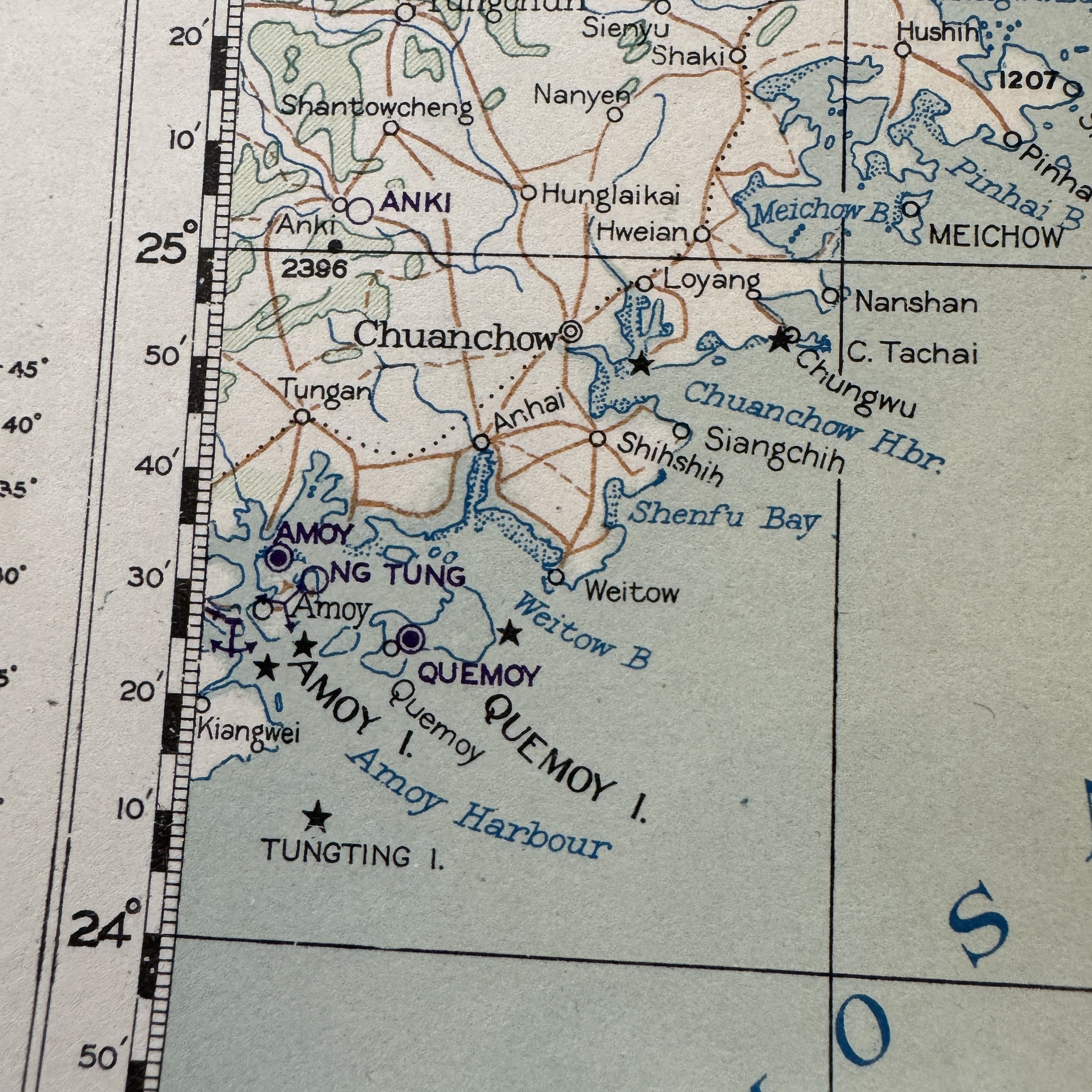
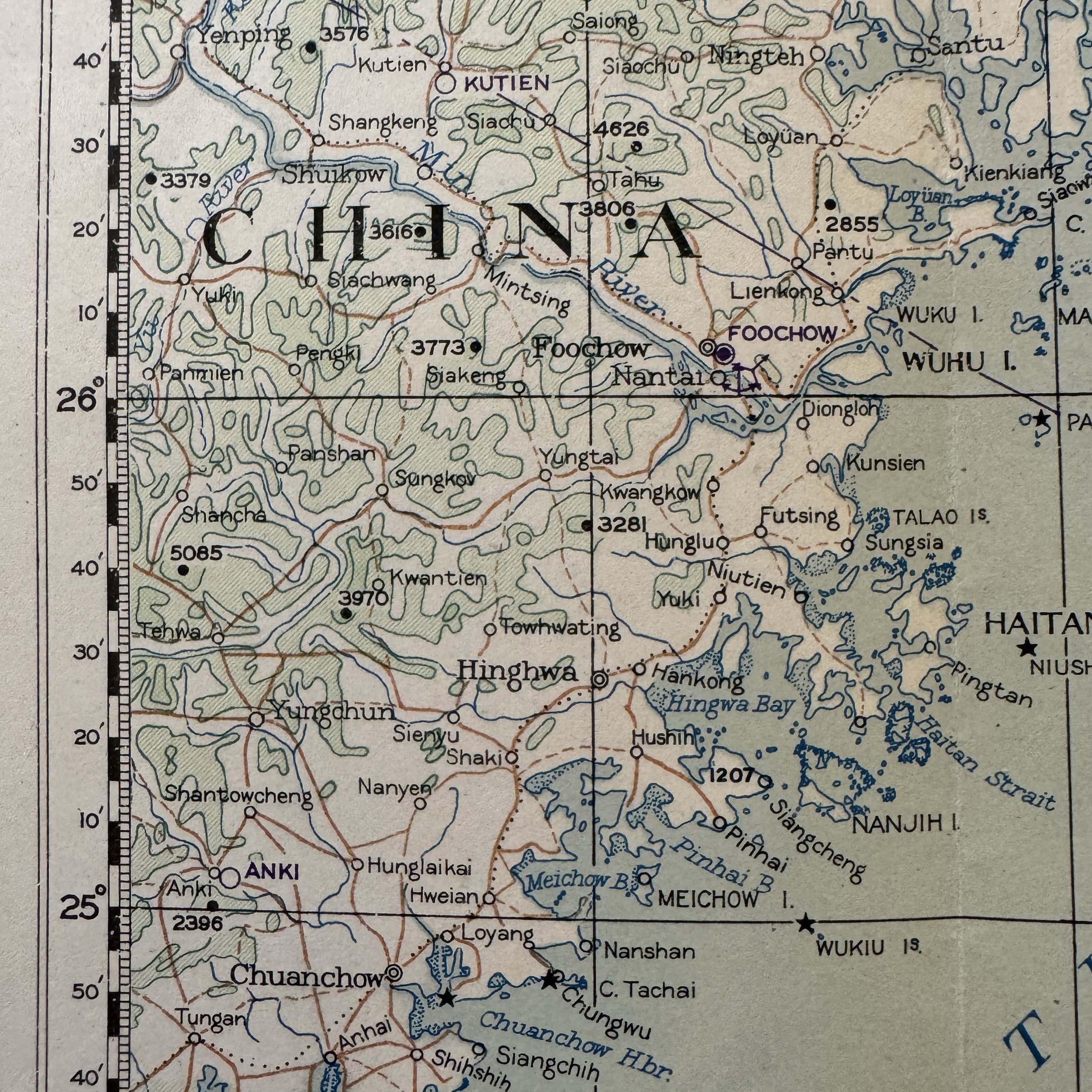



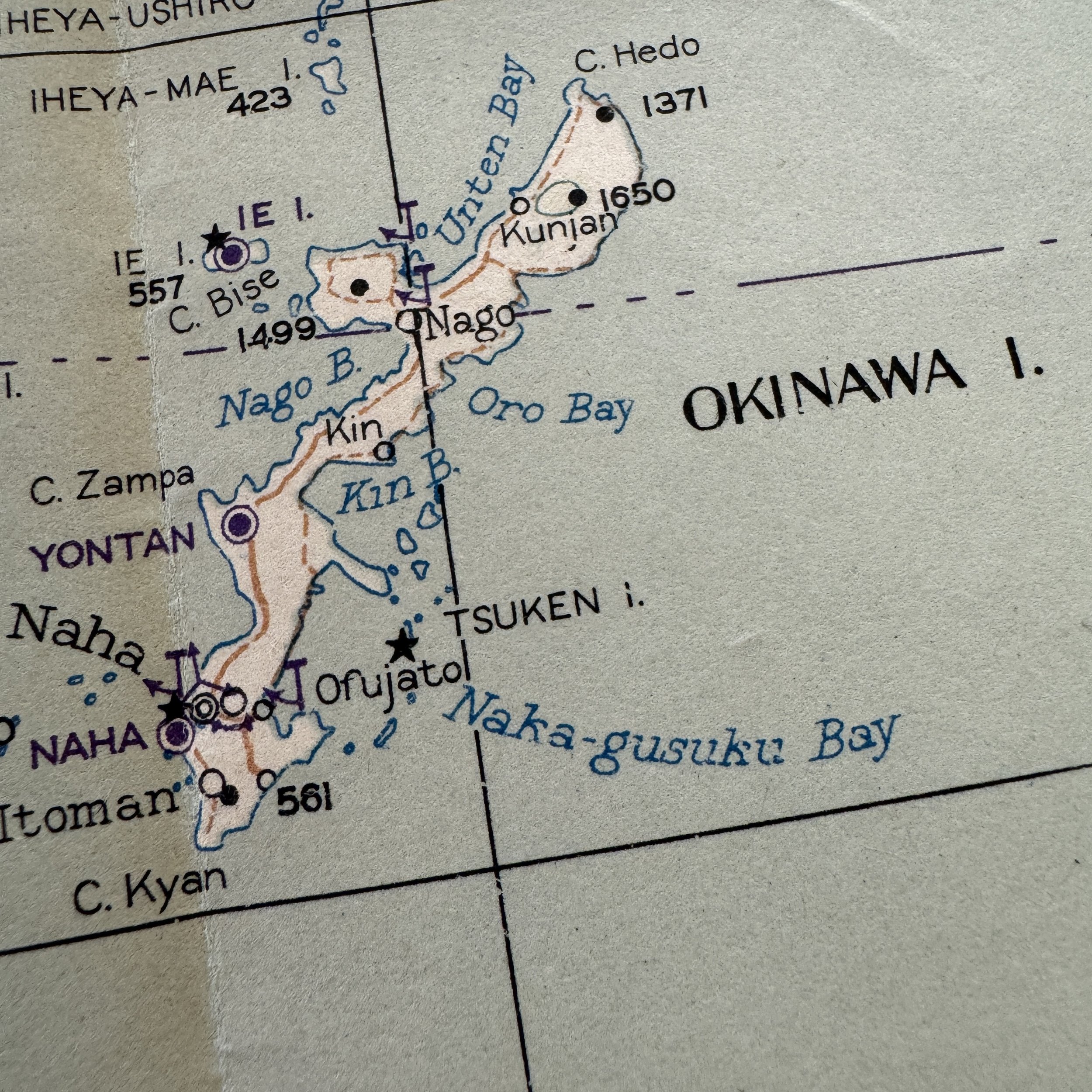
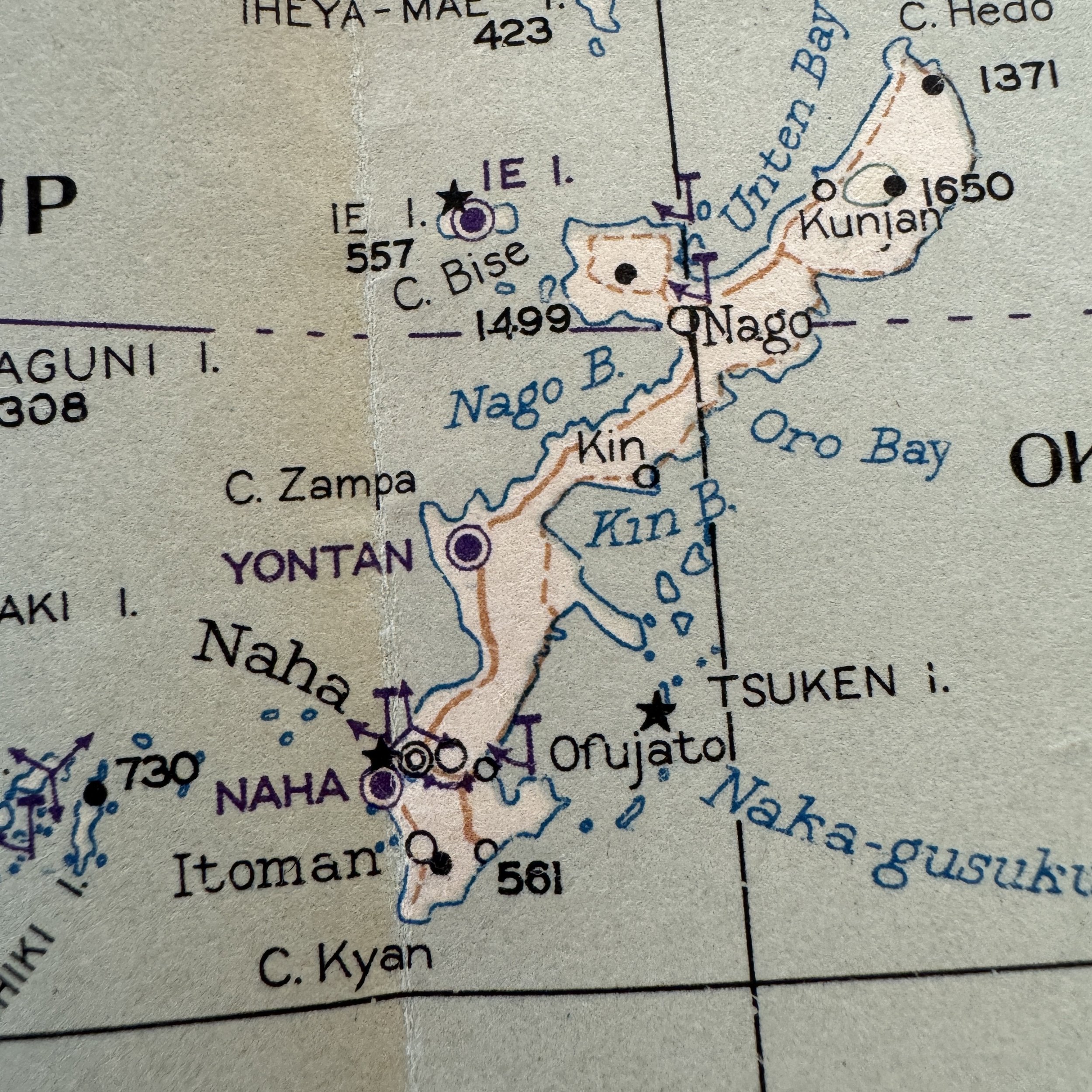
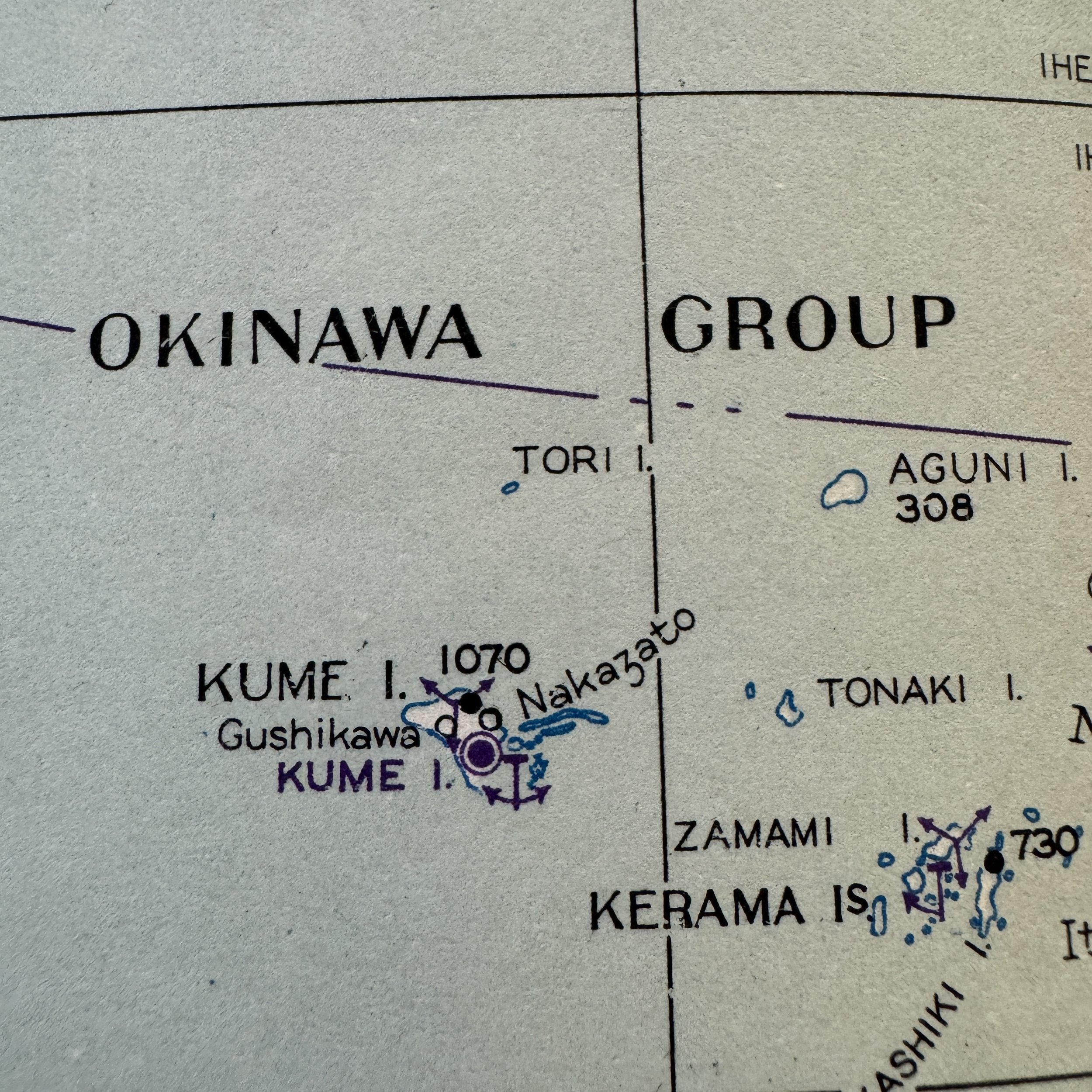
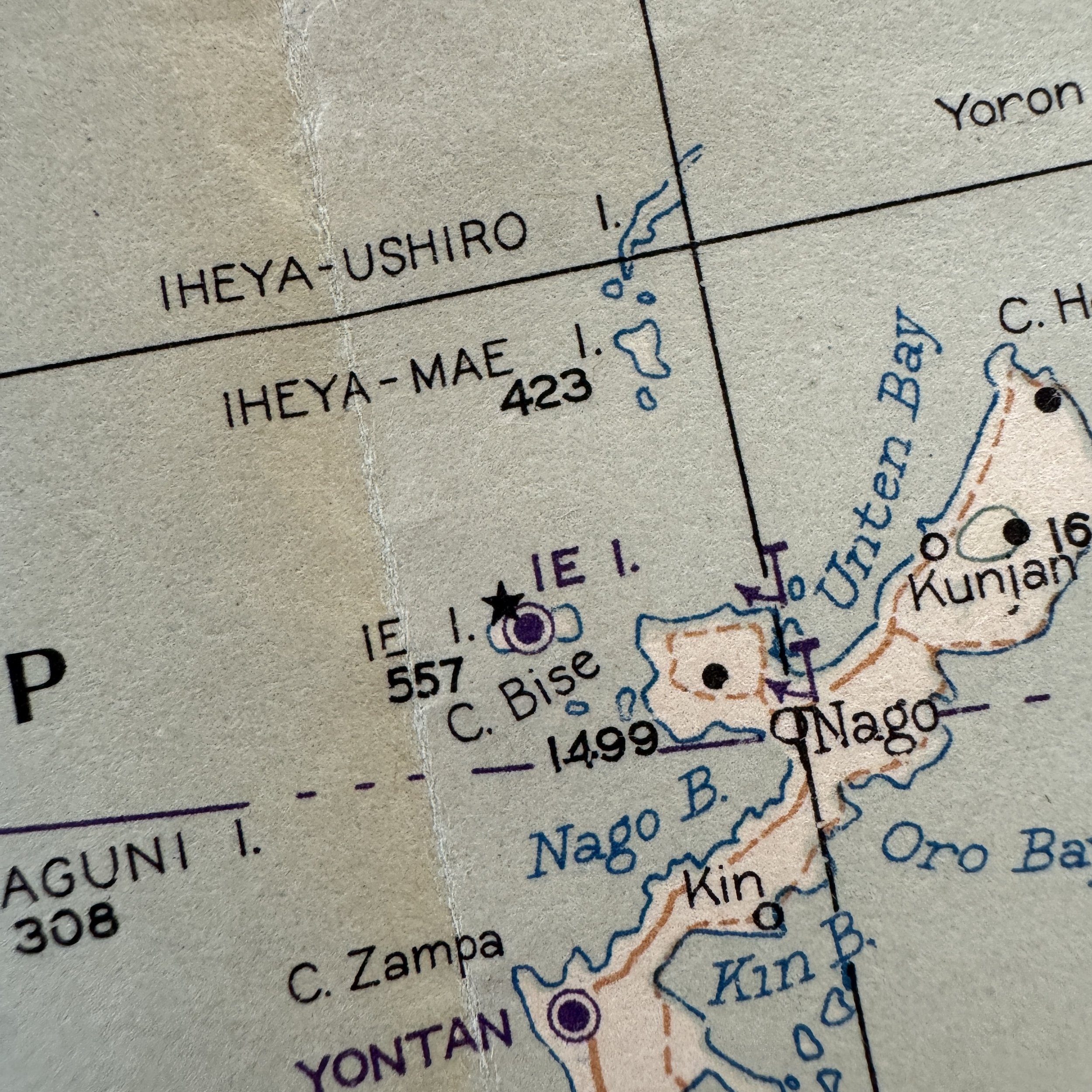
EXTREMELY RARE! WWII 1944 U.S. 5th Air Force Formosa & Okinawa Pacific Theater Campaign Combat Flight Navigation Map (Specially Produced For U.S. 5th Air Force Missions)
Comes with hand-signed C.O.A. and a full historical write-up
*From the World War II Pacific Theater Bring-Back Collection of a U.S. Fifth Air Force Veteran.
Type: Original World War II U.S. Army Air Force Combat Flight Navigation Map Specially Prepared for the U.S. 5th Air Force by South West Pacific Area Command.
Campaign/Operations: Pacific Theater - Formosa (Taiwan) and the Ryukyu Islands Operation Iceberg (The Invasion of Okinawa)
As the war neared its end in mid-1945, the Fifth Air Force intensified its air campaigns against Formosa (Taiwan) and the Ryukyu Islands, crippling Japan’s ability to mount a counteroffensive. Formosa, a key Japanese military hub, was relentlessly bombed, with B-24 Liberators and B-25 Mitchells targeting airfields, fuel depots, and transportation networks, while P-38 Lightnings and P-51 Mustangs conducted fighter sweeps to eliminate enemy aircraft. Simultaneously, during Operation Iceberg, the invasion of Okinawa, the Fifth Air Force provided critical pre-invasion bombardments and close air support, striking Japanese fortifications, artillery positions, and kamikaze airfields. Their role in intercepting kamikaze waves helped minimize damage to Allied naval forces and ensured continuous air superiority. These relentless air operations not only secured Okinawa but also isolated Japan’s home islands, leaving them vulnerable to direct attack and ensuring the Allies’ dominance in the final phase of the Pacific War.
Date: October 1944
Size: 21.5 × 30 inches
This exceptionally rare and museum-grade World War II artifact is an original U.S. Army Air Force combat flight navigation map, dated October 1944, that is one of only a handful of known original examples that still exist that was specially prepared for the U.S. Fifth Air Force by the Ground Headquarters (G.H.Q.) South West Pacific Area (S.W.P.A.) during the critical stages of the Pacific War.
This combat mission flight map played an essential role in Fifth Air Force aerial operations, guiding strategic bombing missions, air superiority campaigns, and ground support operations against entrenched Japanese forces. Throughout 1944 and 1945, the Fifth Air Force was at the forefront of the Allied offensive, leading precision air strikes, supporting amphibious landings, and crippling Japanese supply lines. The combat history embedded in this 5th Air Force map reflects the ferocity of the air battles fought across the Pacific, where every successful mission contributed to the ultimate defeat of Japan’s military dominance in the region.
What makes this map an extremely rare WWII artifact is its status as one of the few surviving Pacific Theater combat maps that were specifically prepared for the U.S. Fifth Air Force under the direction of the Chief Engineer of Ground Headquarters within the South West Pacific Area Command. These maps were strategically developed using aerial reconnaissance data and topographical intelligence, ensuring that pilots and mission planners had the most accurate and up-to-date information when conducting high-risk bombing raids and fighter patrols. This combat flight navigation map was a product of close collaboration between the U.S. Fifth Air Force and the Royal Australian Air Force, reflecting the critical joint efforts between American and Australian forces in executing aerial operations against heavily fortified Japanese positions.
During this period, the Fifth Air Force was engaged in some of the most pivotal air campaigns in the Pacific Theater. Missions guided by maps like this one supported major operations such as the Battle of Leyte from October to December 1944, the Luzon Campaign from January to June 1945, and the Borneo Campaign from May to August 1945. The Fifth Air Force’s role in strategic bombing operations over New Guinea, the Philippines, and Japanese-held island fortresses ensured the success of Allied ground forces, allowing them to seize critical airfields and disrupt Japanese logistical networks. Aircraft such as the B-24 Liberator, B-25 Mitchell, and P-38 Lightning relied on precise navigation maps like this to execute long-range bombing missions, strafing runs on enemy supply convoys, and fighter escort duties for critical airstrikes.
This map would have been used during aerial assaults on key Japanese airfields, heavily fortified garrisons, and industrial centers, guiding pilots through hostile airspace where anti-aircraft fire and enemy interceptors posed constant threats. As the Fifth Air Force expanded its operations, combat flight maps like this became indispensable tools for mission planning, providing essential intelligence on enemy troop movements, coastal defenses, and strategic targets. With the Japanese military increasingly relying on suicidal kamikaze attacks and desperate counteroffensives, the accuracy and reliability of these maps became even more vital for the safety and effectiveness of Allied air operations.
As the war progressed into 1945, this map would have been used to support aerial operations in the Ryukyu Islands, Okinawa, and the final Allied push toward the Japanese mainland. Missions originating from captured airfields in the Philippines and New Guinea were instrumental in preparing for an eventual invasion of Japan. The Fifth Air Force’s continued dominance in the skies, made possible through maps such as this, played a significant role in crippling Japan’s air force, destroying critical supply routes, and ensuring the success of MacArthur’s island-hopping strategy.
This artifact stands as a testament to the ingenuity, precision, and strategic coordination that defined the U.S. Fifth Air Force’s aerial campaign in the Pacific War. With so few of these original combat navigation maps surviving, this piece represents a once-in-a-lifetime historical relic, directly linked to the air war that led to the Allied victory in the Pacific and the eventual surrender of Japan.
Condensed 1944-1945 History of U.S. Fifth Air Force in the Pacific Theater:
The U.S. Fifth Air Force served as the aerial spearhead of General Douglas MacArthur’s island-hopping campaign from 1944 to 1945, playing a critical role in securing air superiority, conducting strategic bombing, and providing close air support for ground forces across the Pacific. As MacArthur’s forces advanced toward the Philippines and ultimately Japan, the Fifth Air Force was responsible for neutralizing key Japanese strongholds, disrupting enemy supply lines, and ensuring the success of amphibious landings. Throughout 1944, the Fifth Air Force was heavily engaged in the New Guinea Campaign, supporting operations in Hollandia (April 1944), Biak (May–June 1944), Noemfoor (July 1944), and Morotai (September 1944). These battles secured critical airfields, allowing the Allies to extend their operational reach further into the Pacific. The Admiralty Islands campaign (February–May 1944)was another key operation, during which the Fifth Air Force conducted extensive bombing raids and fighter sweeps to eliminate Japanese resistance on Los Negros and Manus Island. These islands provided the Allies with forward bases to launch further operations against the Philippines. By late 1944, the Fifth Air Force was instrumental in the Philippines Campaign, beginning with the Battle of Leyte Gulf (October 1944), where it conducted bombing raids on enemy airfields and provided air cover for naval and ground forces. As the campaign progressed into Luzon (January 1945), Mindoro, and Mindanao, Fifth Air Force aircraft engaged in relentless airstrikes against Japanese defensive positions, shipping convoys, and troop concentrations. Throughout these operations, the Fifth Air Force employed a variety of aircraft, including P-38 Lightnings, B-24 Liberators, B-25 Mitchells, and A-20 Havocs, to strike Japanese airfields, infrastructure, and reinforcements across islands such as Palawan, Cebu, Panay, and Borneo. As the war neared its end in mid-1945, the Fifth Air Force continued its air campaigns against Formosa (Taiwan) and the Ryukyu Islands, ensuring that Japan’s ability to counter the Allied advance was further diminished. By securing these islands, the Fifth Air Force played a decisive role in paving the way for the final stages of the Pacific War, culminating in the liberation of the Philippines and the eventual planning for an invasion of Japan.
19th Bombardment Group
22nd Bombardment Group
2d Combat Cargo Group
312th Bombardment Group
317th Troop Carrier Group
345th Bombardment Group
348th Fighter Group
35th Fighter Group
374th Troop Carrier Group
375th Troop Carrier Group
380th Bombardment Group
38th Bombardment Group
3rd Air Commando Group
3rd Bombardment Group
417th Bombardment Group
433rd Troop Carrier Group
43rd Bombardment Group
475th Fighter Group
49th Fighter Group
54th Troop Carrier Wing
58th Fighter Group
6th Reconnaissance Group
71st Reconnaissance Group
85th Fighter Wing
86th Fighter Wing
8th Fighter Group
90th Bombardment Group
91st Reconnaissance Wing
V Bomber Command
V Fighter Command